Tokyo, the Electric City
- Aaron Schorr
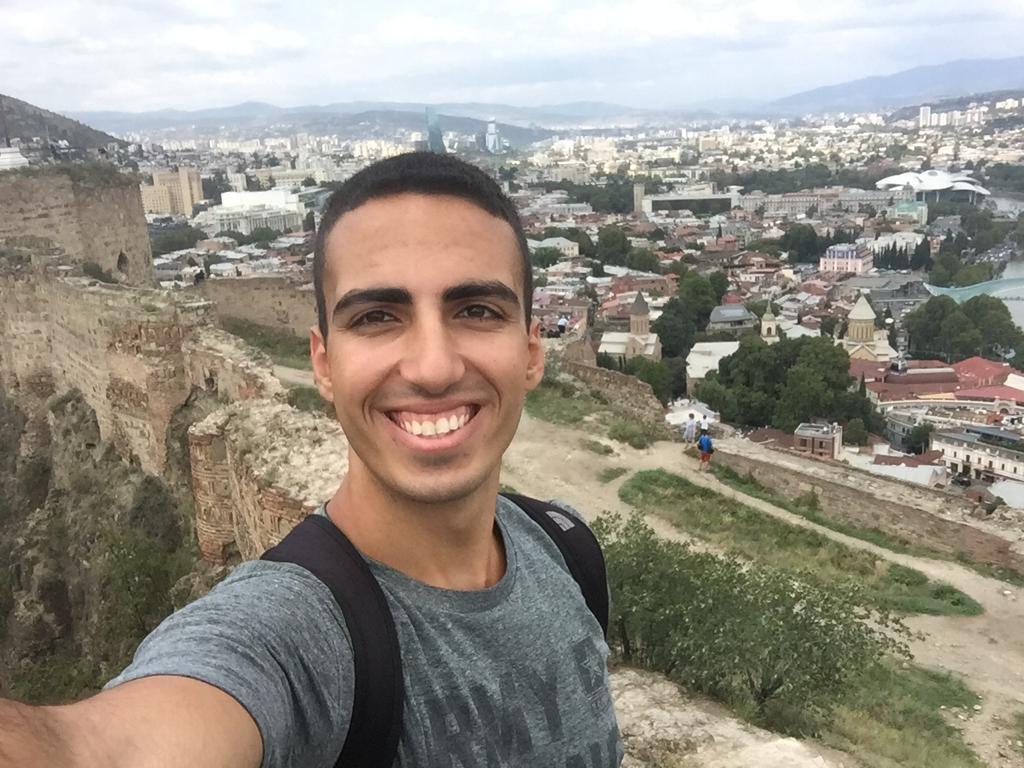
- Feb 24, 2020
- 17 min read
The coronavirus outbreak meant I couldn't go to China and had to change my plans accordingly. I did this with a very heavy heart, since China was the one country on this trip I couldn't just go around (not unless I fancied a visit to Pakistan and Afghanistan, that is). In other words, the only thing that could have reasonably prevented me crossing Asia overland were those that caused China's neighbors to close their borders, like a war or a viral outbreak, and one of those had actually happened.
I had started making alternative plans back in Hoi An, where Peleg and Roy were also considering changing theirs. A couple drinks and a look at flight prices later, we had somehow talked each other into going to Japan, with Yotam all too happy to join. Thus I found myself on a flight to Tokyo, a place I had long wanted to visit but had never actually planned for, with little idea of what to expect of Japan beyond how Hollywood portrayed the country. Our trip to Japan was going to be done much more spontaneously than what I was used to, having had very little time over the previous two weeks in Vietnam to do research and make plans.
A View of the World's Largest Metropolis
We landed at Narita airport on a bright and crisp morning, the 6°C air seemingly colder after a month in Vietnam. Merely choosing how to get into the city was overwhelming, with two trains and multiple buses to choose from. We decided to take a direct bus to Shinjuku Station which was near our hostel and spent a very long time trying to explain ourselves to the ticket vendor, who spoke next to no English. This was a scene that promised to repeat itself many times during our stay in Japan, which despite being one of the most highly-developed countries in the world with strong economic ties to the West speaks very little English.
The drive from the airport was an amazing introduction to Tokyo. Everything was incredibly orderly, the neat highways in perfect condition and the traffic incredibly polite. The contrast with Vietnam was so sharp it could compete with Japanese knives; the feeling was similar to returning to Israel from Africa, like suddenly moving forward in time. Tokyo is crisscrossed with highways, never wider than two lanes to conserve space and elevated well above street level to minimize the impact on their surroundings, which let us make the 75-kilometer trip to Shinjuku in no time.
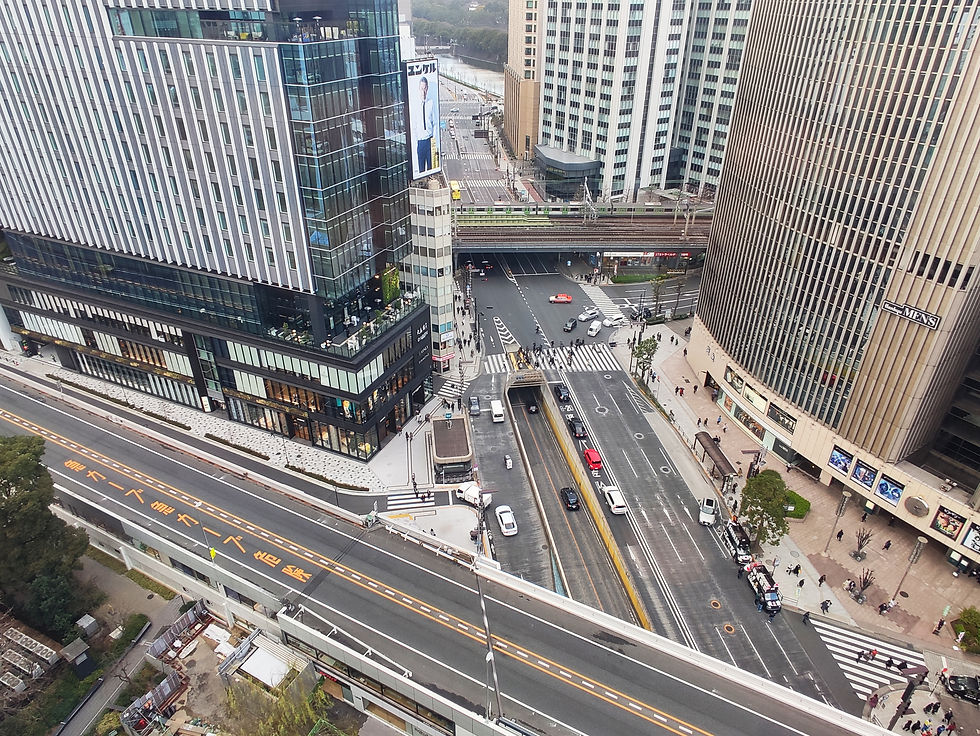
Disembarking in Shinjuku, we decided to get some food. A ramen place I found on Google Maps ended up being both incredibly delicious and an introduction to Japanese food culture - you pay at an automatic ticket machine, fill out a form with your preferences (richness, noodle texture, spice level), sit at a bar with privacy dividers between customers, and hand your ticket to the chef, who gives you your food and closes the curtain between you and the kitchen for yet more privacy. Each stall even has its own cold water tap to minimize interpersonal contact.
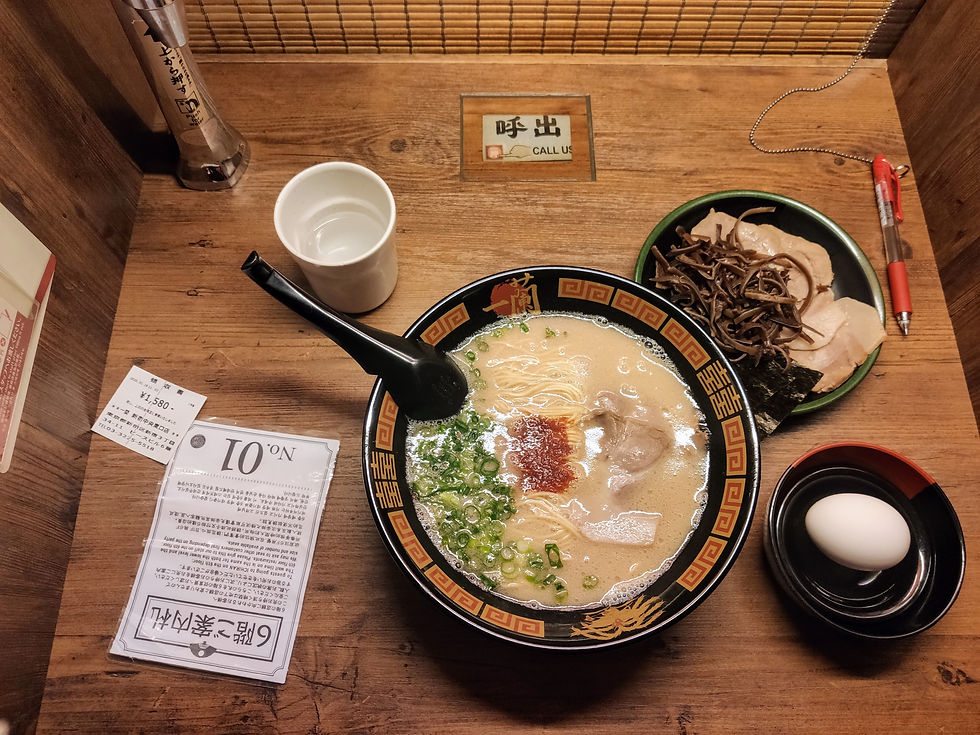
Roy and Peleg landed a bit later than us and met us at the Tokyo Metropolitan Government offices. Taking the elevator to the 35th floor, we were treated to a panoramic view of West Tokyo, an uninterrupted urban mass streching well past the horizon in every direction, even in the perfect visibility. I had never seen anything like it before, and when I looked up the numbers in made sense. The sheer scale of urbanization in Tokyo boggles the mind, with a greater metro area of over 14,000 square kilometers (roughly two-thirds that of Israel) and a population of over 38 million people, making it the most populous urban area in the world. "Tokyo" can mean lots of different places, from the inner city itself, to the surrounding districts, all the way to the entire metropolis, spanning seven prefectures across southern Honshu Island and forming what's known as the Kantō Region.
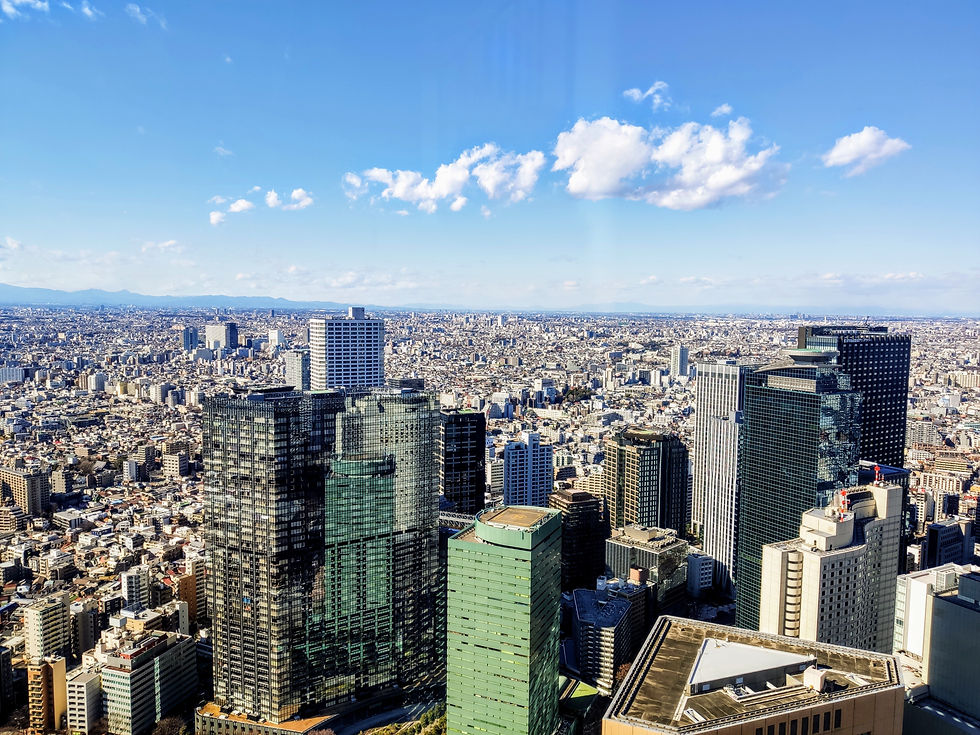
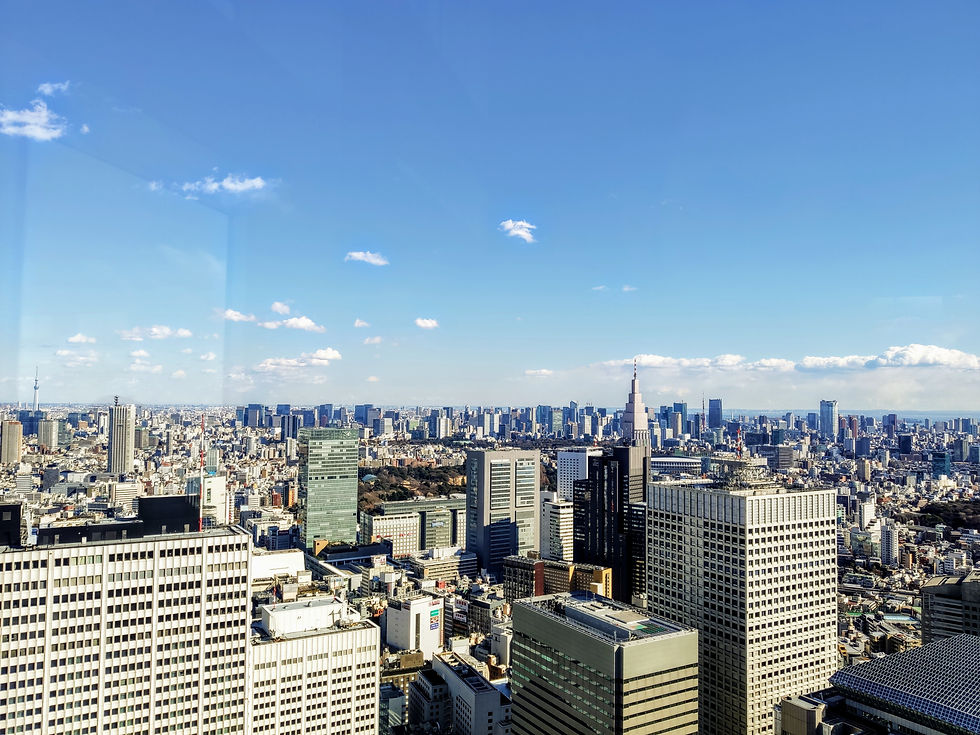
Shinjuku: Seedy Nightlife and Serene Parks
We had all missed quite a bit of sleep the previous night and had a relaxed afternoon, heading back out to explore Shinjuku after sunset. We walked through an area known as the Golden Gai, feeling almost quaint despite its location, with dozens of small bars and restaurants dotting its alleyways. Dinner was at an izakaya, a Japanese establishment which is essentially a cross between a restaurant and a neighborhood pub but without interaction between groups of customers, with both a large seating area and private rooms available (sensing the theme yet?). There was no English menu, so somehow we ended up with some rice dishes that had eggs and meat in them, sort of like Vietnamese food but much more flavorful.
We continued into Kabukicho, the heart of Shinjuku, which was exactly how I had imagined Tokyo at night. The side of every building was lit up with multicolored signs, advertising everything from food to movies to strip clubs. So many strip clubs. We had unknowingly entered Tokyo's red-light district and the streets were lined with African men who tried to get us to come to their establishment, promising free drinks and "no surprises". Saying no was getting annoying and we allowed ourselves to get roped into a deserted touristy bar, but at least the drinks were decently-priced by Japanese standards.
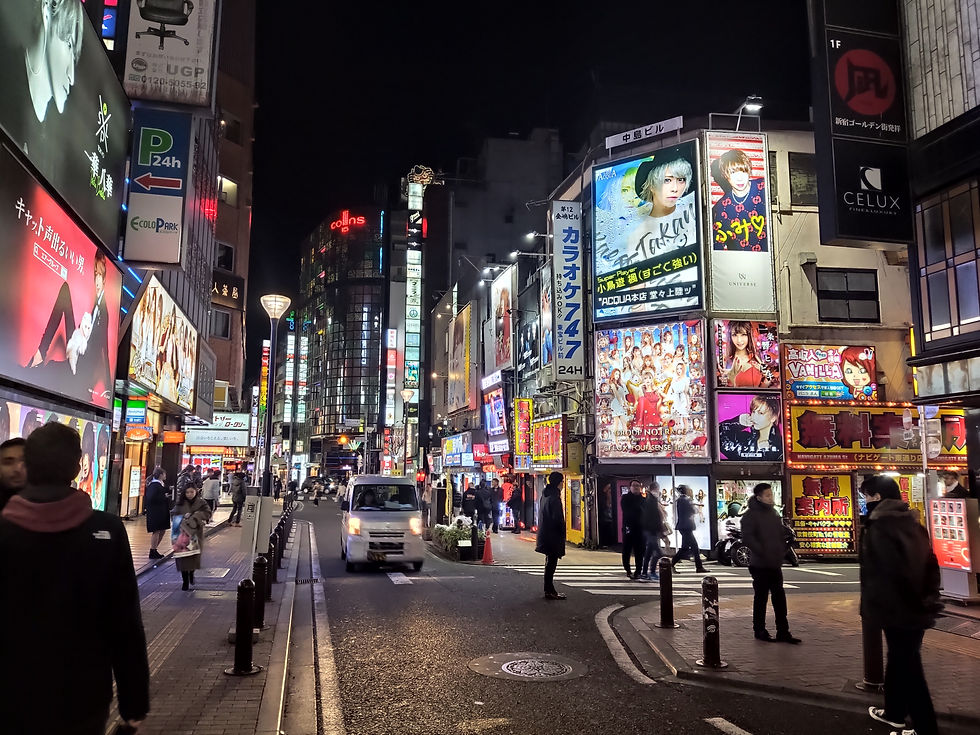
Back on the streets, we were approached by yet another promoter who invited us to a party with "breasts of every size". He seemed interesting so I made some small talk; he was super excited to hear we were from Israel. He told us he was from Biafra, a region of Nigeria that had briefly been independent in the 1960s, and that he and many of his compatriots are Jewish. Some quick internet research revealed that the leader of the modern Biafran independence movement, Nnamdi Kanu, considers himself a Jew and showed up in a tallit when put on trial in Nigeria for treason in 2015. Alongside his political activism, Kanu also leads Jewish prayers and ceremonies in Nigeria, which explained how our new acquaintance thought he was Jewish. This turn of events was beyond bizzare but at least I had learned something that didn't involve sex workers.
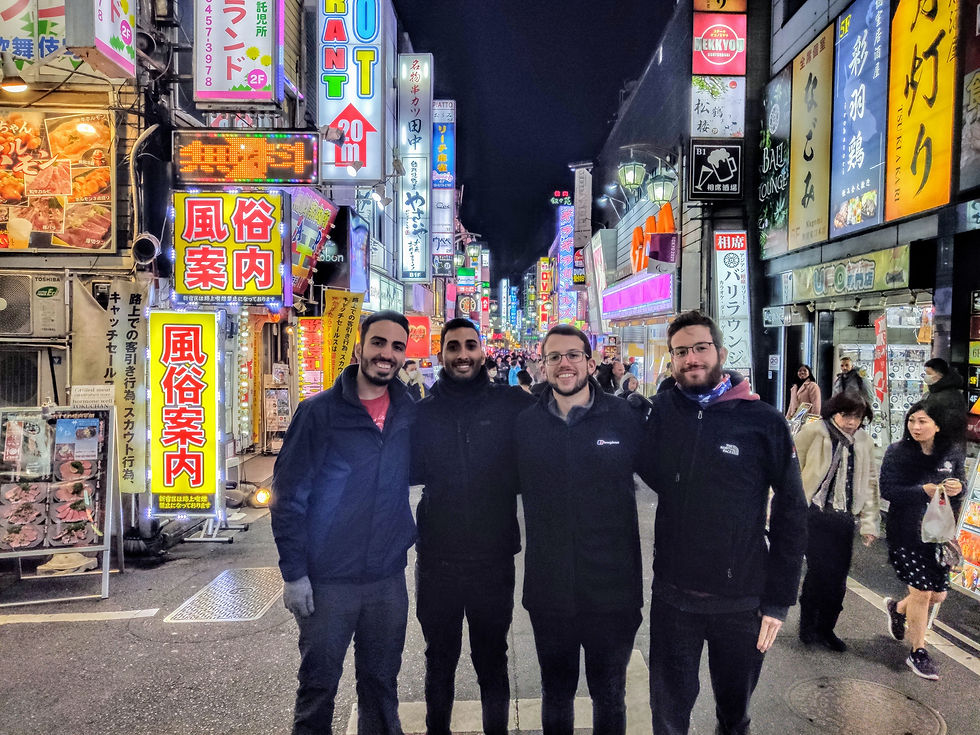
After a good night's sleep and the best shower I've had in months, we visited Meiji Jingū, a large park and Shinto shrine located between Shinjuku and Shibuya, the next district to the south. The complex is dedicated to dedicated to Emperor Meiji, best-known in the West for leading the modernization of Japan under one Emperor in what's known as the Meiji Restoration, who is practically revered as a deity in modern Japan. The shrine was full of Japanese people who had come to pay their respects and ask the Emperor's spirit for good fortune, and the park had dozens of barrels of wine and sake, Japanese rice wine, on display, all donated by wineries and distilleries to honor the late Emperor.
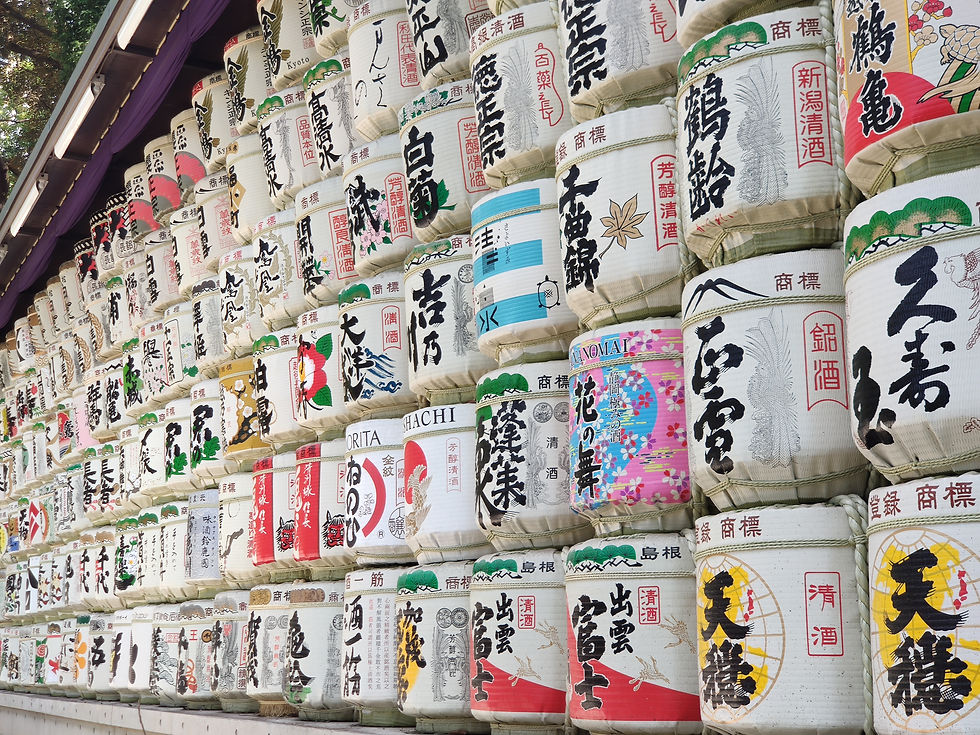
Further south was Yoyogi Park, where local crowds were gathered around a small section of plum trees that were in full bloom. It was beautiful, attracting local photographers, families, and young women with their small dogs, who were made to pose in sweaters on small stools in front of the trees. I can only imagine Japanese parks in sakura season, when the famous cherry trees blossom in the spring.
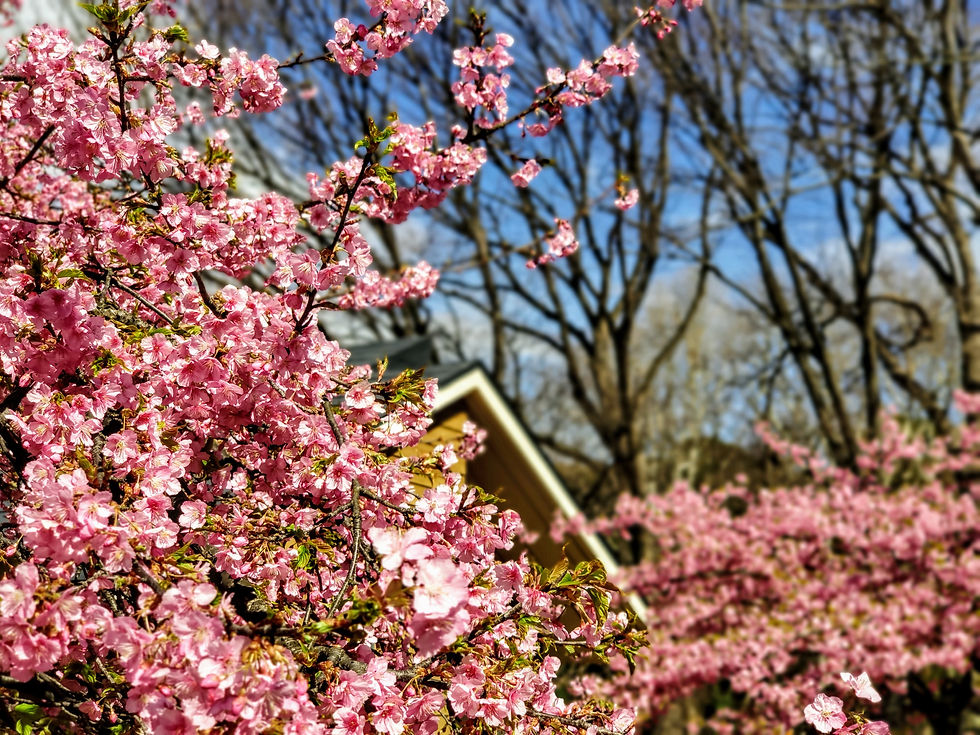
After the park, we decided to try and experience as much Japanese weirdness as we could. Tokyo has convenience stores at practically every street corner, and we started by stopping at one whenever we got hungry to buy the most bizzare Japanese snacks we could find. In one day, we had matcha wafers with sakura seasoning, matcha ice cream wrapped in rice paper, and cheese-flavored chocolate which tragically exploded in our hostel microwave.
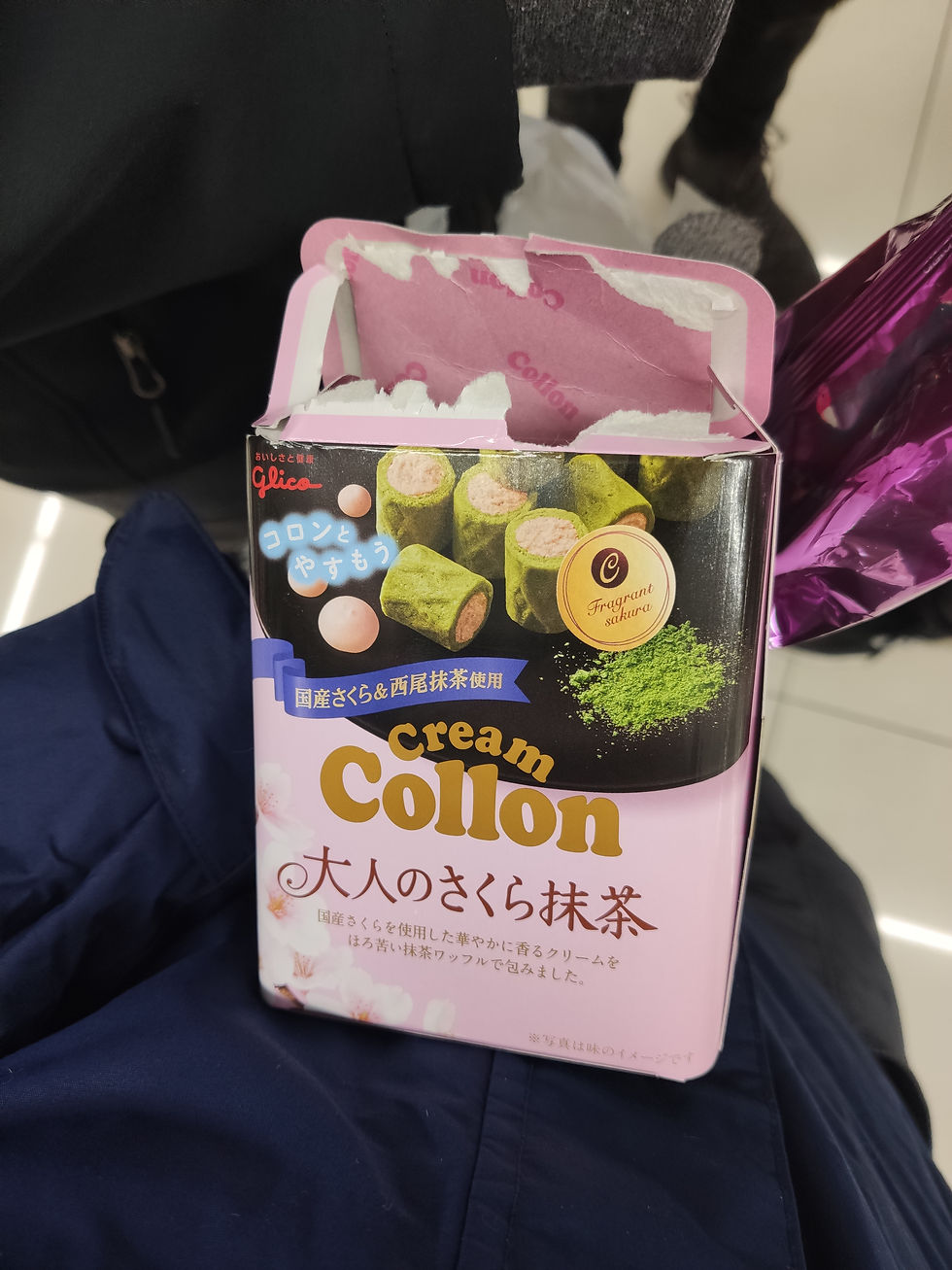
We ended up in downtown Shibuya and visited Don Quijote, a massive department store selling everything from three dozen flavors of Kit-Kats to washing machines to sex toys. We spent well over two hours exploring each of the seven stories in the store, which was basically a continuous sensory overload of colors and sounds.
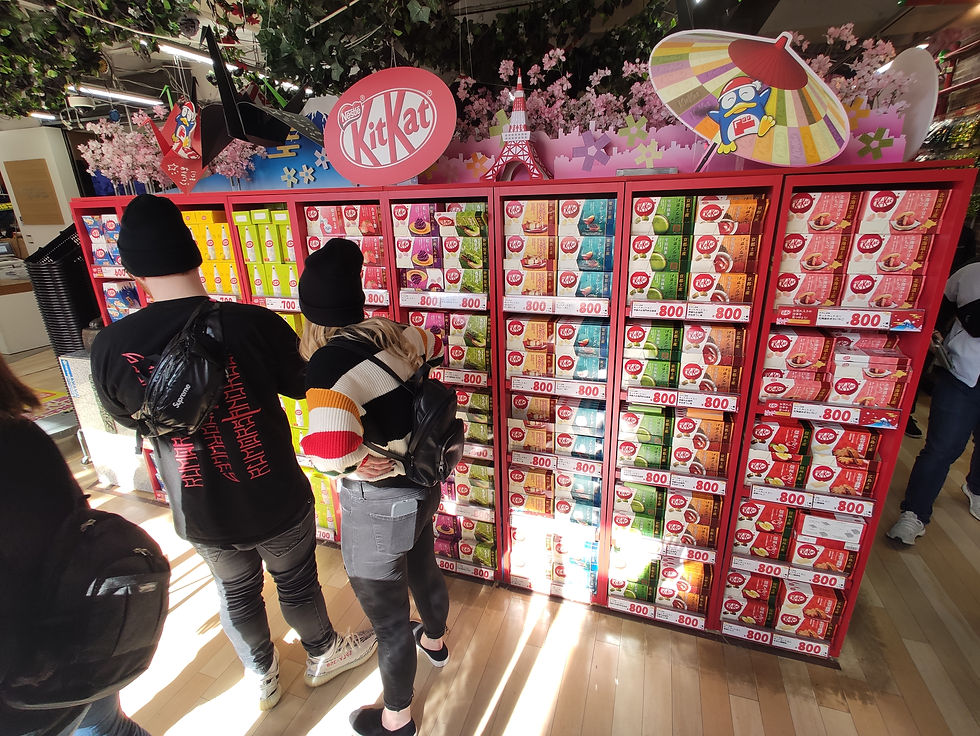
Nearly across the street from Don Quijote was the famous Shibuya Crossing, reputably the busiest pedestrian crossing in the world, where masses of people cross an intersection between a major office district and a station with both long-distance trains and 3 metro lines. It was mid-afternoon so the crowds weren't anywhere near their rush hour peak, but the mass of humans crossing Dōgen-Zaka Avenue was still dizzying, though it was so orderly that it felt less overwhelming than crossing a major intersection in Tel Aviv. As I was capturing a time-lapse video of the intersection, ten people wearing onesies casually drove by in formation in Mario Kart-style go-karts, removing any possible doubts I was in Japan.
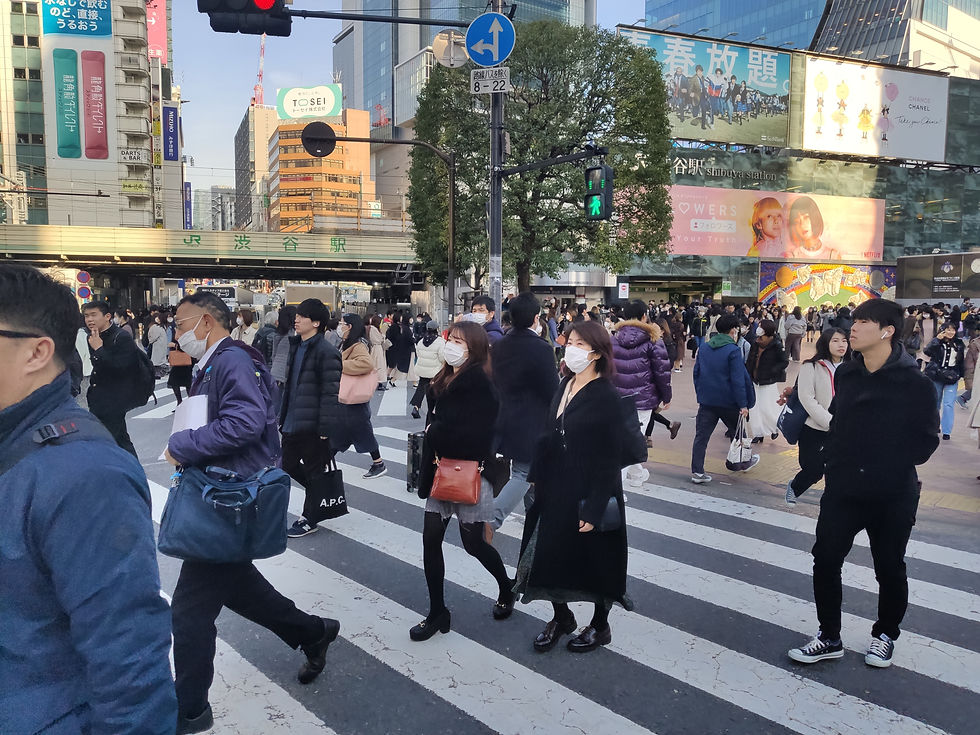
We had covered a lot of ground on foot since leaving our hostel many hours earlier and needed to take a subway back, which was an experience in of itself. I could write an entire book about the Tokyo Metro, but I'll limit myself to a couple paragraphs later in this post. Our hostel had a Japanese food workshop in the evening, where we learned how to make takoyaki, fried balls of dough filled with cheese, green onions, or octopus, which tasted much more American than Japanese. We finished the evening with card games, sake, and lemon shōchū (Japanese schnapps) in the hostel, planning to go out but never making it out the door.
A Taste of the Future
The next day started off exploring the district of Roppongi, which turned out to be much too lacking in character for our taste. It could have been a ritzy neighborhood in any Western city, but for the Japanese writing everywhere and the views of the bizzare Tokyo Tower, a massive red-and-white replica of the Eiffel Tower.
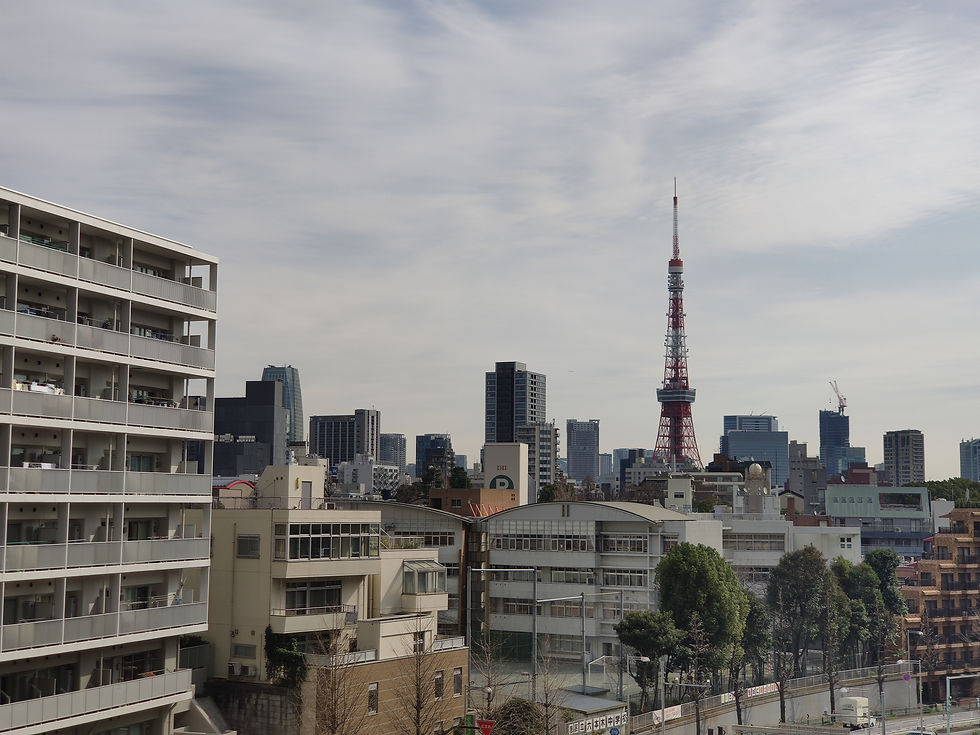
After excellent ramen in another private room, we set our sights on reaching the island of Odaiba, which was supposed to have some unique museums. We traveled there on the Yurikamome Line, a privately-operated elevated subway which was like a step into the future. The dramatic urban landscape was straight out of a sleek video game, giving way to views of Tokyo Bay and the massive Rainbow Bridge, which we crossed in a kind of metal cage that felt like a teleport. The 15-minute ride was my favorite part of the day thus far, an architectural roller coaster ride that felt like a happy dream.
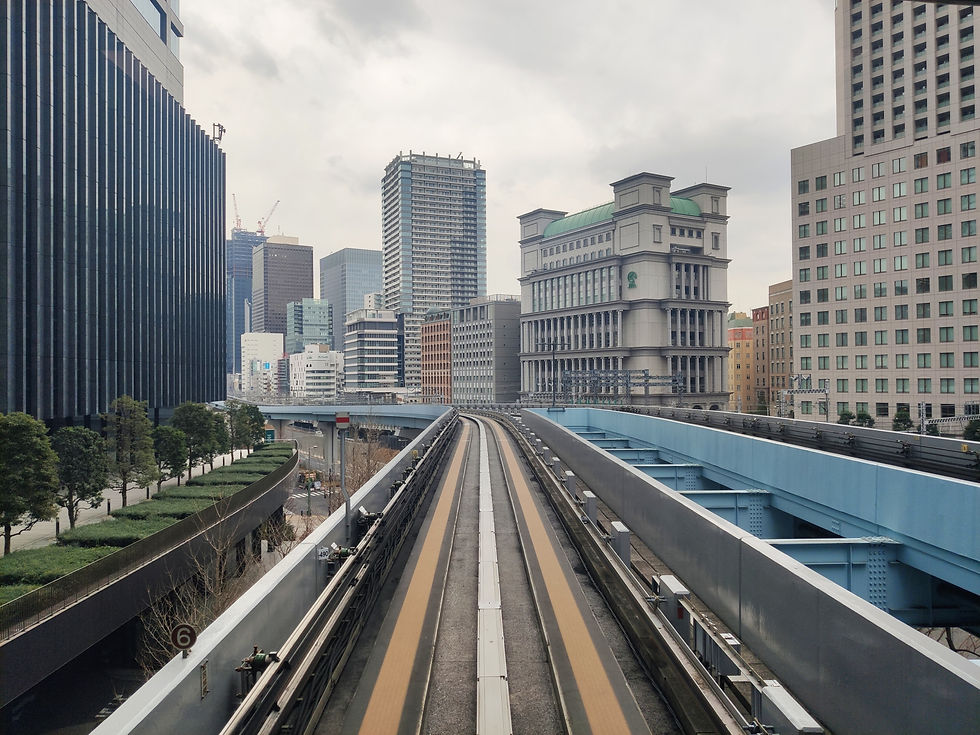
Odaiba itself was another wonderland for me. A pedestrian suspension bridge that was actually called the Teleport Bridge led us to Pallette Town, a series of brightly-colored industrial warehouses that had been converted into a tourist attraction, with a Ferris wheel and several museums. We chose to visit teamLab Borderless, a mind-blowing expanse of digital art totally engulfing all of my senses, each room assaulting me with new colors, shapes, and sounds, in an experience I imagined was as close as you can get to an LSD trip without actually taking any drugs. Words can't accurately describe what it was like, it's one of those things that has to be experienced to understand.
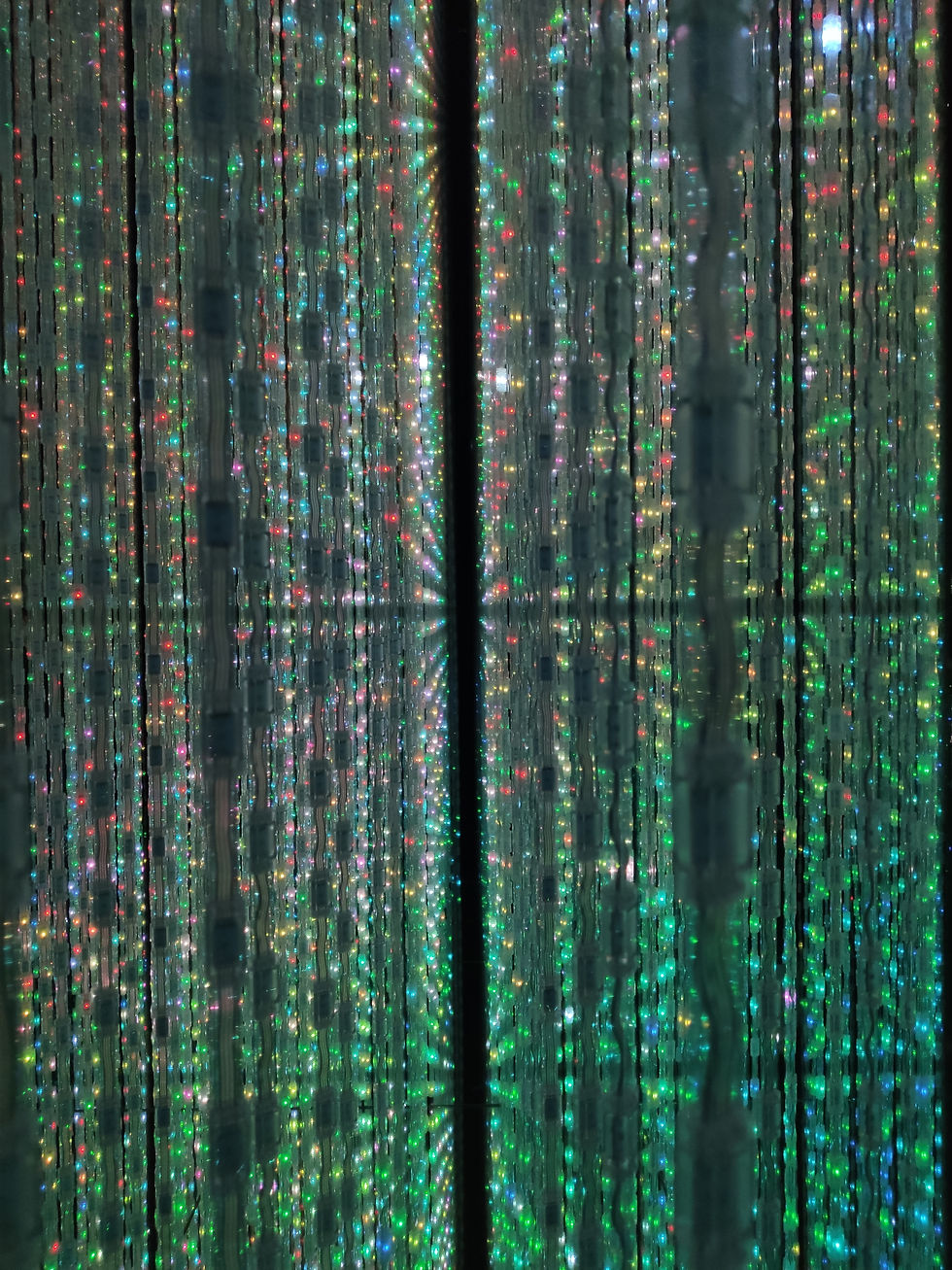
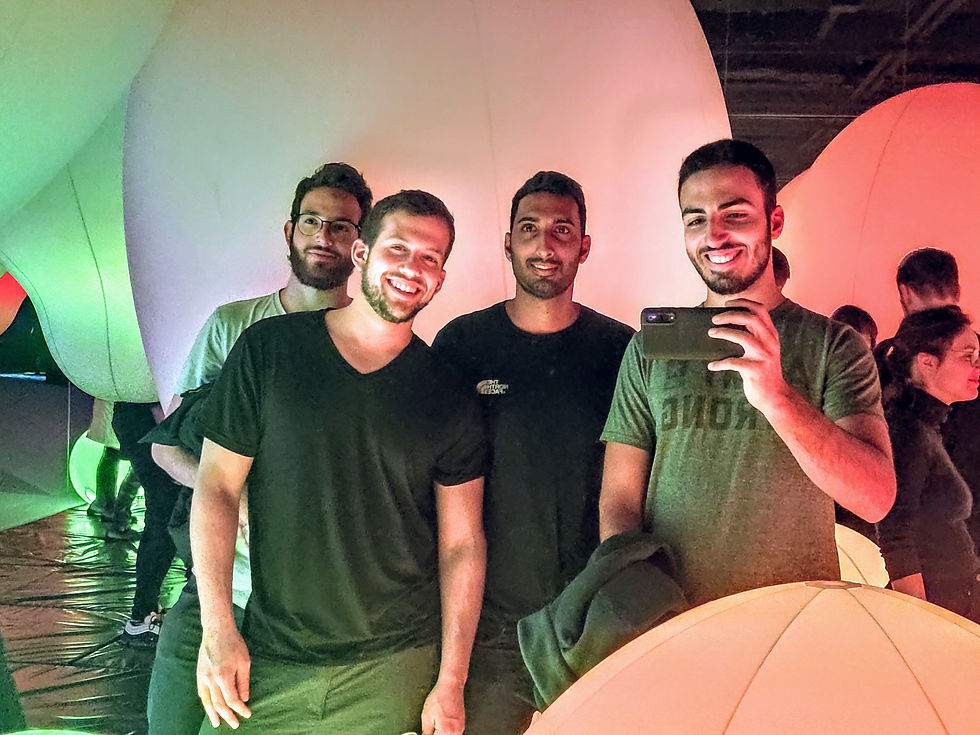
Three hours later, having lost all sense of orientation and with heads spinning, we continued next door to the Toyota City Showcase, which was basically a giant Toyota museum and showroom, complete with 3-D diagrams of hydrogen-powered cars, racing simulators, and employees in cartoonish costumes riding around on strange personal vehicles as an obscenely cheerful woman provided a running commentary in Japanese. I was practically in heaven, making my dreams as a 13-year-old come true. To make it even better, the whole thing was free, which offset the insane entry fee of ¥3,200 ($28) at teamLab. There was even a special driving course where you could test-drive different Toyota models for ¥300 ($2.7), but they required an International Driving Permit and mine was at the hostel, so my other teenage dream of driving a pickup truck would have to wait for another day.
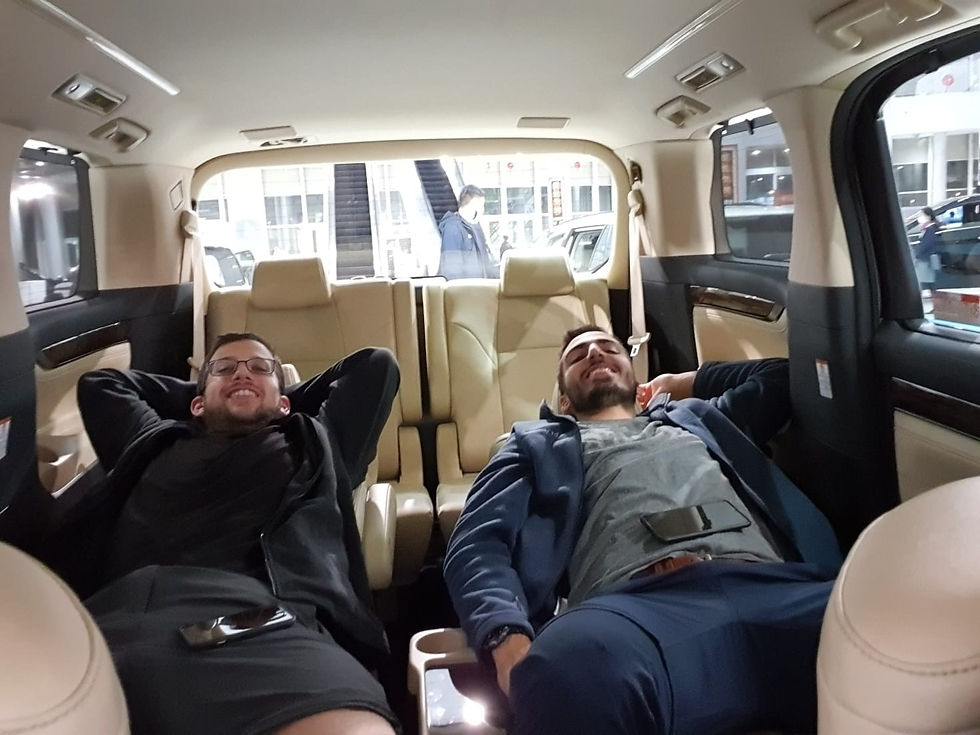
Continuing our global haircut tradition, Yotam and I decided to get our hair cut and tried to find a reasonably-priced barber near us. We took the Yurikamome Line back, which was almost as impressive after dark as in daylight, and stumbled upon a barber shop in the pedestrian mass of Ginza Station. Japanese take their haircuts seriously and this was by far the cheapest option at ¥1,200 ($11), with other spa-like barber shops charging five times that or more, but the barbers were definitely not accustomed to non-Japanese hair and spoke no English, making for less-than-ideal results. To make up for it, they had vacuum tubes which left my head almost totally clean after the haircut, in one of those why isn't this the norm everywhere? moments.
We were in the heart of the flashy Ginza district and decided to explore it and try to find a sushi place for dinner. This was easily the ritziest place I had been in my life, with chauffer-driven cars outside restaurants advertising 10-piece sushi sets for ¥20,000 ($180), shiny jewelry stores, and lots of people in elegant evening wear. Even obviously-rich places I had visited like the Hollywood Hills or Knightsbridge in London didn't have so much money on display; this was no place for backpackers like us. Snacks and Sapporo beer from the minimarket did the trick for another pleasant evening at the hostel, and we decided to leave Shinjuku the next morning and spend our remaining nights in a different part of Tokyo to experience a different side of the city.
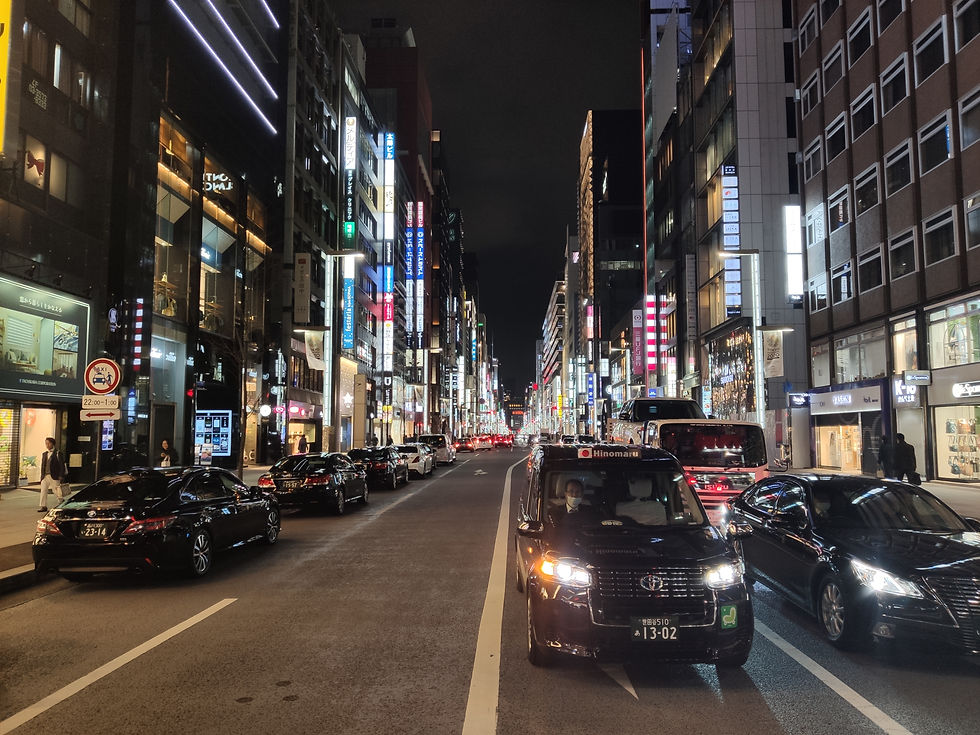
The World's Best Subway
One of the best things about Tokyo is its subway system, or rather systems. Most of central Tokyo (an area the size of London) is served by the "normal" subway system, which is run by two operators - Tokyo Metro with nine lines and Toei Subway with four. Operating at an amazing frequency of up to 24 trains an hour in either direction on each line, the two companies together handle over eight million passengers a day, more than any other city in the world.
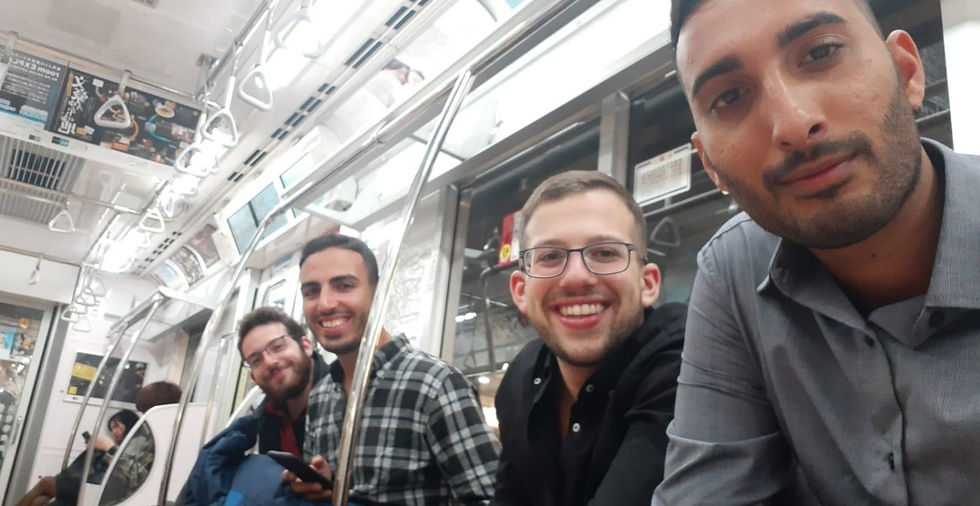
Incredulously, this only accounts for less than a quarter of transit ridership in Tokyo, with most of the traffic using heavier rail systems that link the more distant parts of the metropolis with the center and one another. Some lines, such as those operated by JR East, the government rail company serving the Kantō Region, double as both subways and commuter rail, crossing the center of town on two major north-south axes before heading to the suburbs. To clarify, "the suburbs" in Tokyo can mean a journey of 100 kilometers or even more.
The other major method of transportation is a series of privately-operated subway lines not part of the main system, such as the Rinkai, Tōyō, and Yurikamome Lines, which connect to Tokyo Metro, Toei, and JR stations, generally serving specific areas lacking other options.
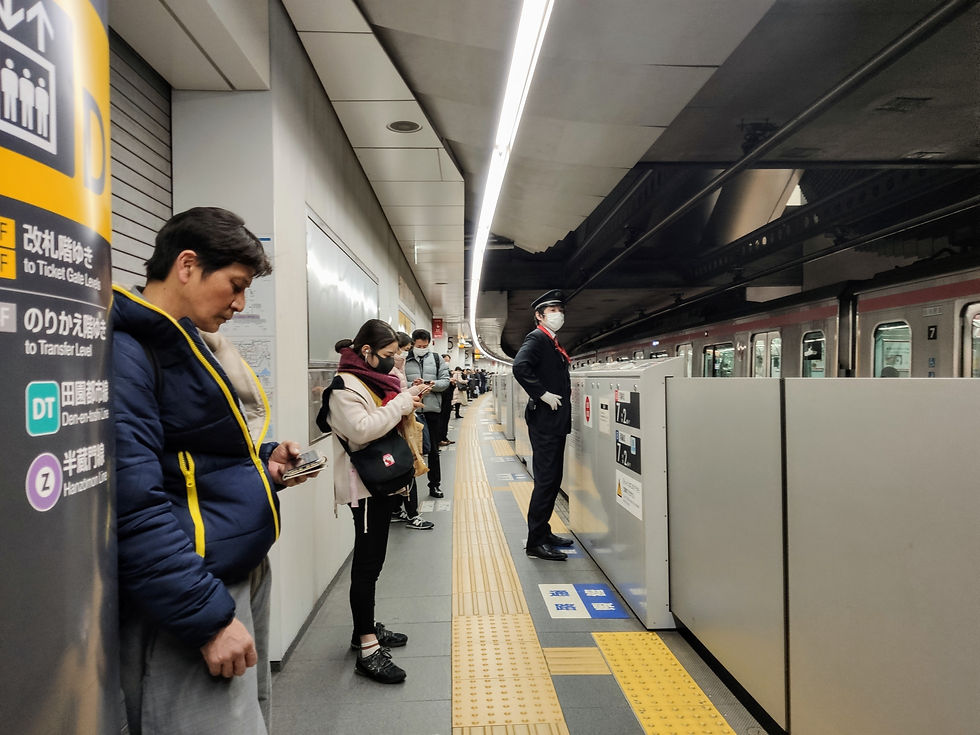
The 38 million people living and working in the megacity need to get around efficiently, so the name of the game is moving masses of people around as quickly as possible. The main stations - Ueno, Shibuya, and above all Shinjuku - are some of the most functional architecture I've seen in my life, every staircase marked with "lanes" for traffic going up and down, every exit clearly numbered to easily find your way out, and the destination of every underground passageway clearly marked to minimize confusion. Vertical separation plays a huge part in maximising efficiency, so major stations are built like highway interchanges for people, with literally dozens of levels above and below ground to reduce human congestion and separate different types of passengers from each other.
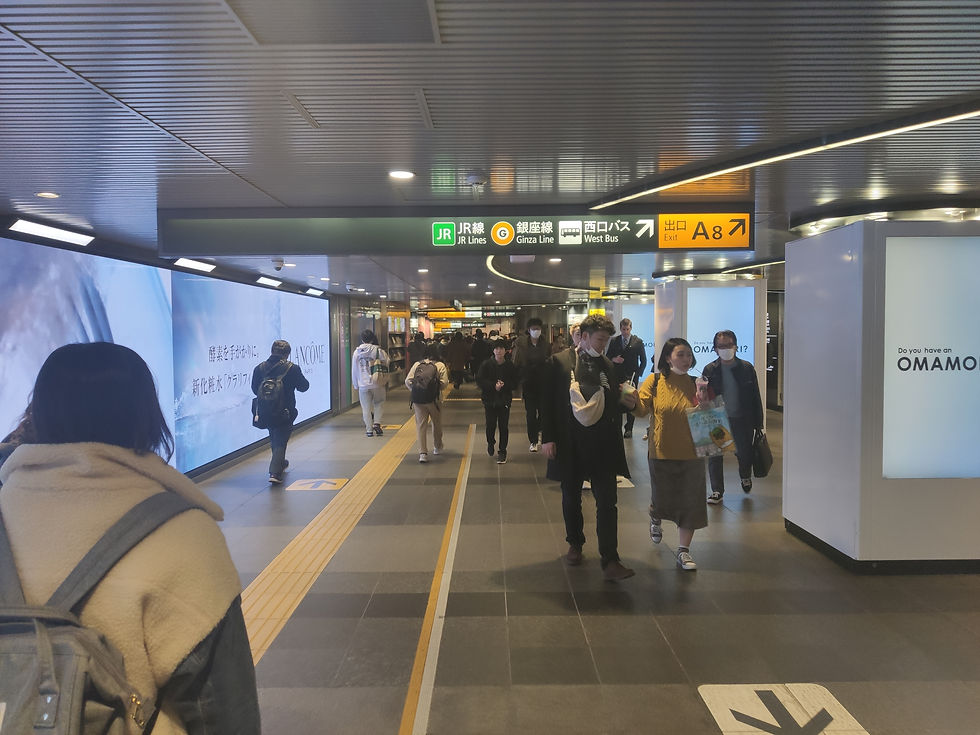
The rest of the system is no less efficiency-focused. Every platform has a diagram showing the exits and transfer locations in each station along the line to help passengers find the most advantageous car to board. The diagrams are usually also displayed in the subway itself before arriving at each station, which are sequentially numbered for each line so passengers only have to remember something as short as "G-05" instead of "Akasaka-Mitsuke Station". To further reduce confusion among tourists, almost everything, including the PA, is translated into English and the most important information also appears in both Chinese and Korean.
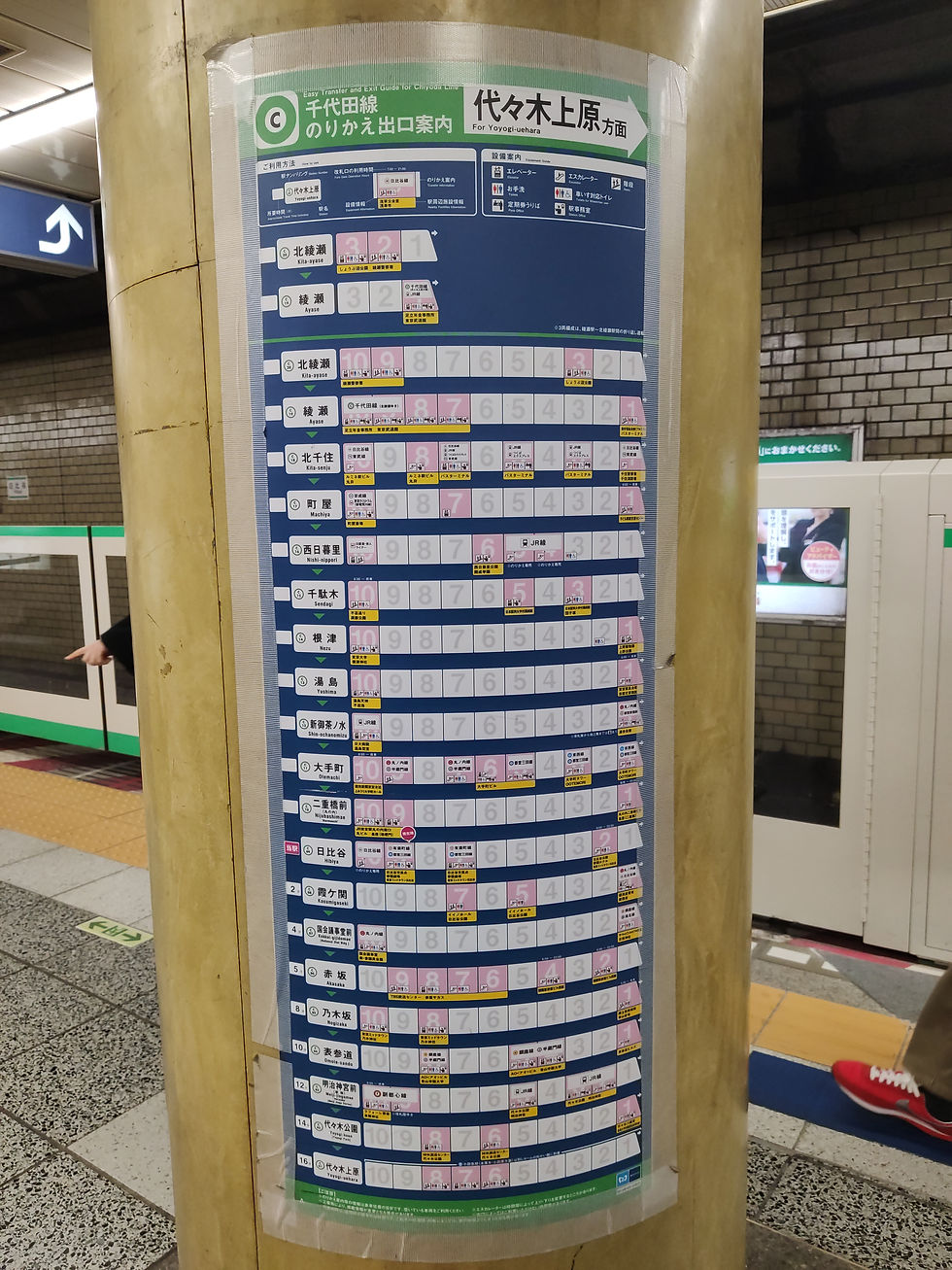
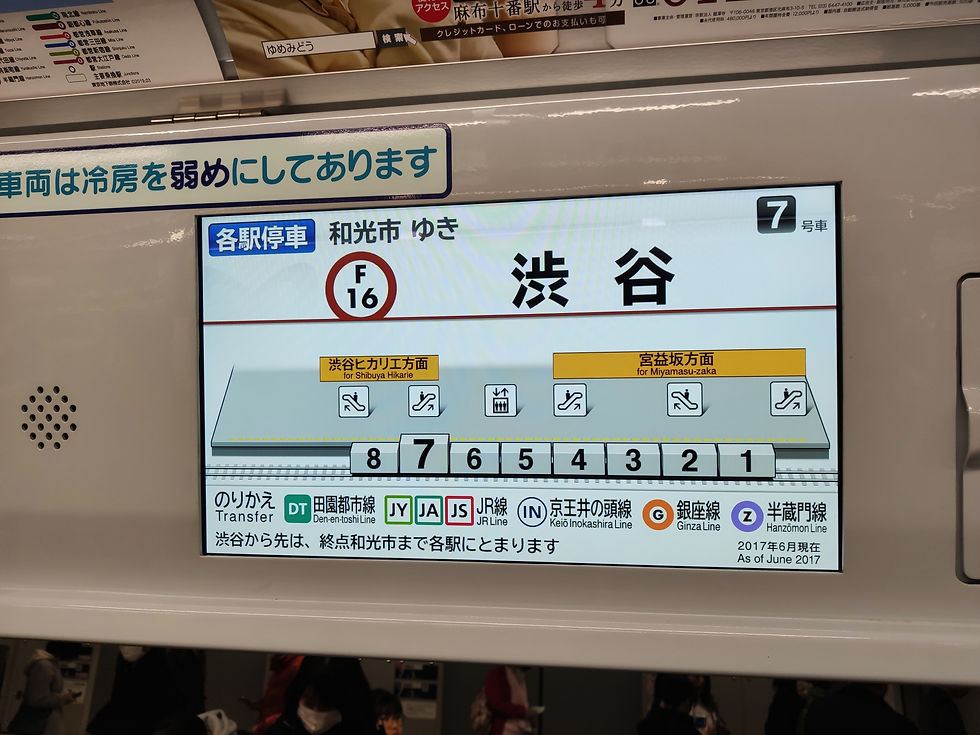
The subway is undeniably uniquely Japanese beyond its efficiency. The trains and stations are spotless almost beyond belief (despite the total absence of garbage cans anywhere below ground), there are female-only cars during rush hour to prevent sexual harassment, and the ads are much more outlandish than anything you might expect to see in a Western metro. Before the train doors close, a cartoonish jingle, unique to each station, is played to encourage passengers to board more quickly and to avoid injuries from the closing doors.
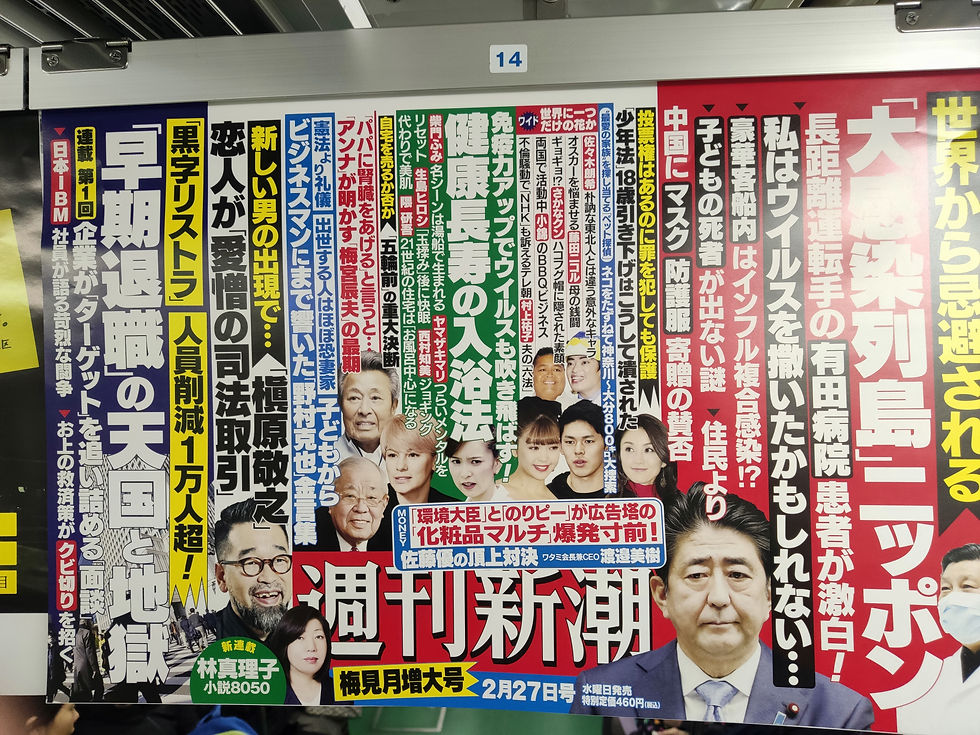
On the flip side, the system has quite a number of shortcomings, first and foremost the five-hour break in service every night. Japan drives on the left, so most walkways and escalators have people keep left, but I would say around 10% are designed for right-hand traffic for some reason. There are signs instructing passengers to keep right, but it's enough places to make the whole thing confusing. The multitude of operators makes things complicated, too. We bought subway passes at the airport thinking they would be valid everywhere, but the JR and private lines are not included in the pass, which makes travel to certain places (like Odaiba, which is a major tourist attraction) challenging or expensive.
Sushi at Last
We moved across town to Akasuka, a touristy district in Tokyo's north-east. Our hostel was only minutes away from Sensō-ji, Tokyo's oldest Buddhist temple, dating all the way back to 645 CE. It was beautiful but overly touristy, the adjacent market seemingly containing more tourists than we had seen since landing in Tokyo put together. Later in the evening, when the temple and market were nearly empty and beautifully lit, was much better.
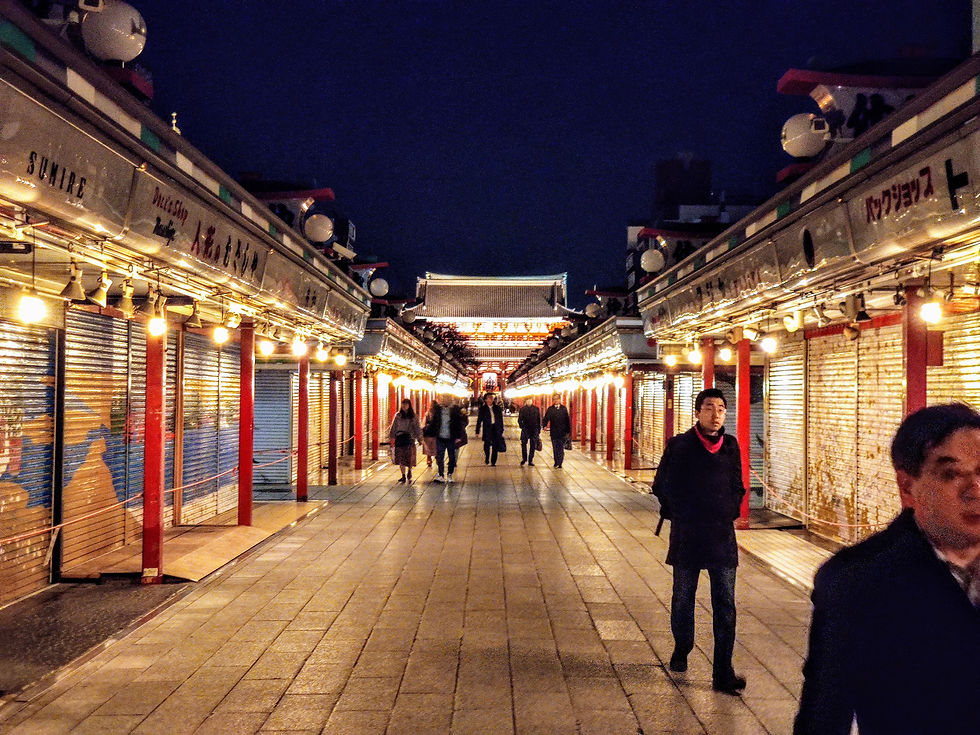
72 hours after arriving in Japan, we decided it was high time to actually eat sushi, and found a nearby place that served different kind of fish and rode sashimi on a conveyor belt, a longtime bucket list item of mine. The customers sit on barstools around the cooking area, where a chef prepares small servings of sashimi on color-coded plates corresponding to their prices. The plates are then placed on the conveyor belt orbiting the tables, and each customer can simply reach out and take any plate they fancy. It was both delicious and fun, with each pair of sashimi costing between ¥140-550 ($1.25-5) and lots of matcha tea to wash them down.
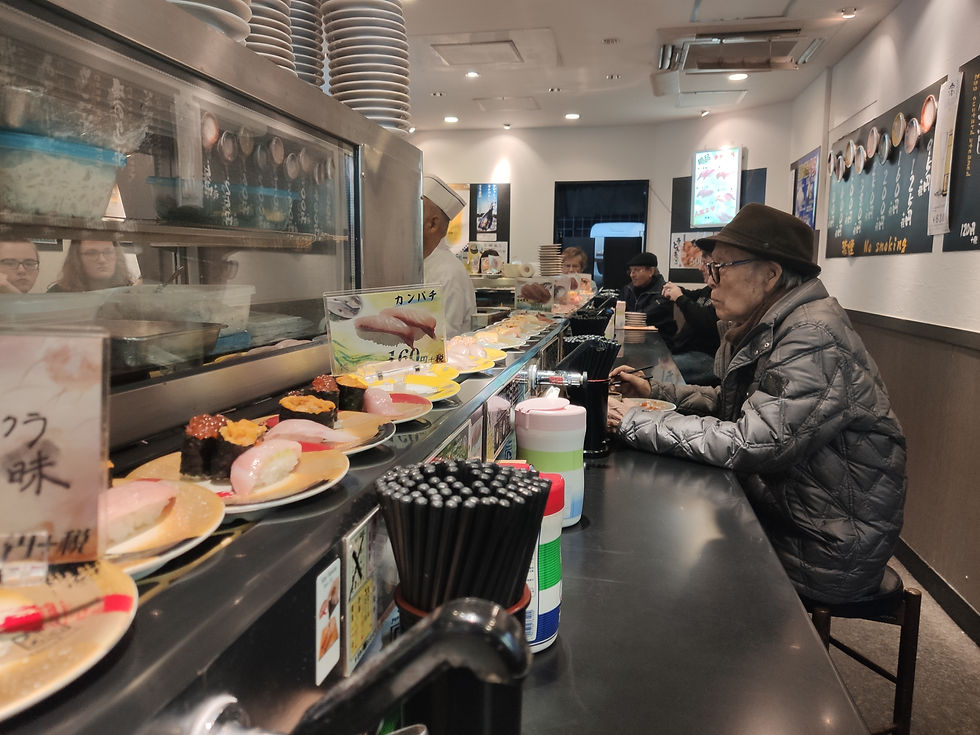
A few stops on the subway brought us to Ueno Park, yet another of Tokyo's amazing urban parks. A very stereotypical Japanese pop group was shooting a music video at the entrance to the park, which was like a scene straight out of a movie. The rest of the park was much more serene, with wide boulevards, Buddhist temples, and grand museums. There were some street performers who had the most difficult audience in the world - painfully polite Japanese people who can hardly bring themselves to clap, never mind cheer for the performers.
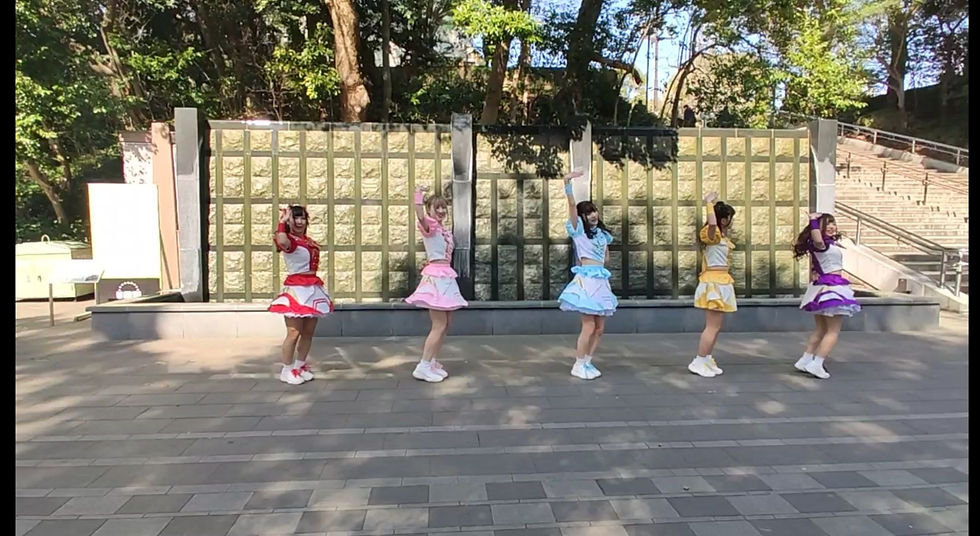
Anime Waitresses, Slot Machine Casinos, and Sleeping in Clubs: Tokyo Nightlife
The weekend had rolled around, and we figured it was high time we gave the Tokyo nightlife another try. Incredibly, the world's most populous city has absolutely no public transportation between 12 and 5 am, so Tokyoites generally take one of the last subways to go out and come back on one of the first ones in the morning. The main area to go out was back in Shibuya, either a 3 hour walk or a ¥6,000 ($54) taxi ride from our hostel, so it was going to be a long night one way or another, which warranted a rare afternoon nap.
We started our evening in Akihabara, Tokyo's most futuristic district. The walk from the subway station took us past dozens of little izakayas which made us regret having ramen back in Asakusa, delicious as it was. Akihabara is all about sensory overload, the streets lit up brighter than daylight with dozens of electronic signs and lined with deafeningly loud arcades, where seemingly brain-dead Japanese men endlessly feed coins into sound-effect-heavy slot machines while watching anime, even as rock music blares from speakers in the ceiling.
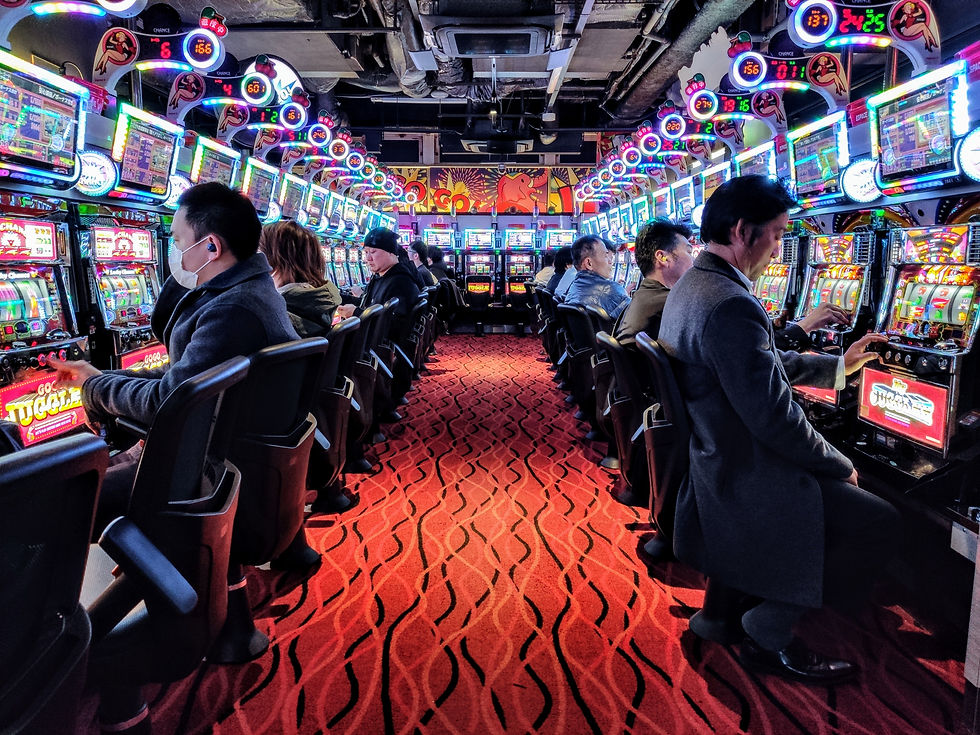
The streets are lined with young women inviting passers-by into so-called "maid cafés", where they are served by waitresses called bishōjo. Dressed in anime-style uniforms, they address their customers as "master" and behave in a cartoonishly cutesy manner, drawing smileys on the food and giggling a lot. It sounds sexual but it isn't; the Japanese call the whole style moe, translating to "the intense affection felt towards fictional characters". Photography is prohibited inside the maid cafés and flirting with the waitresses is actually considered a major faux pas. It isn't all innocuous, though, and Akihabara also contains lots of sex shops, some a shocking seven stories tall, packed with both local customers and tourists and stocking products which are enough to make anyone blush. This was Japanese otaku culture ad absurdum, a place without a counterpart anywhere else in the world.
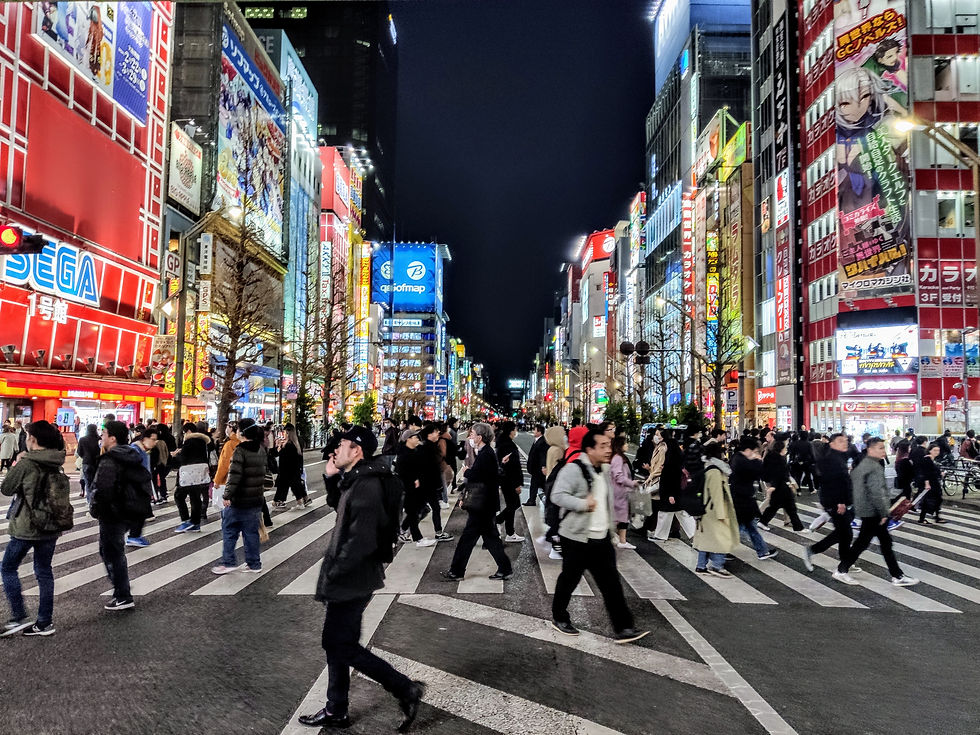
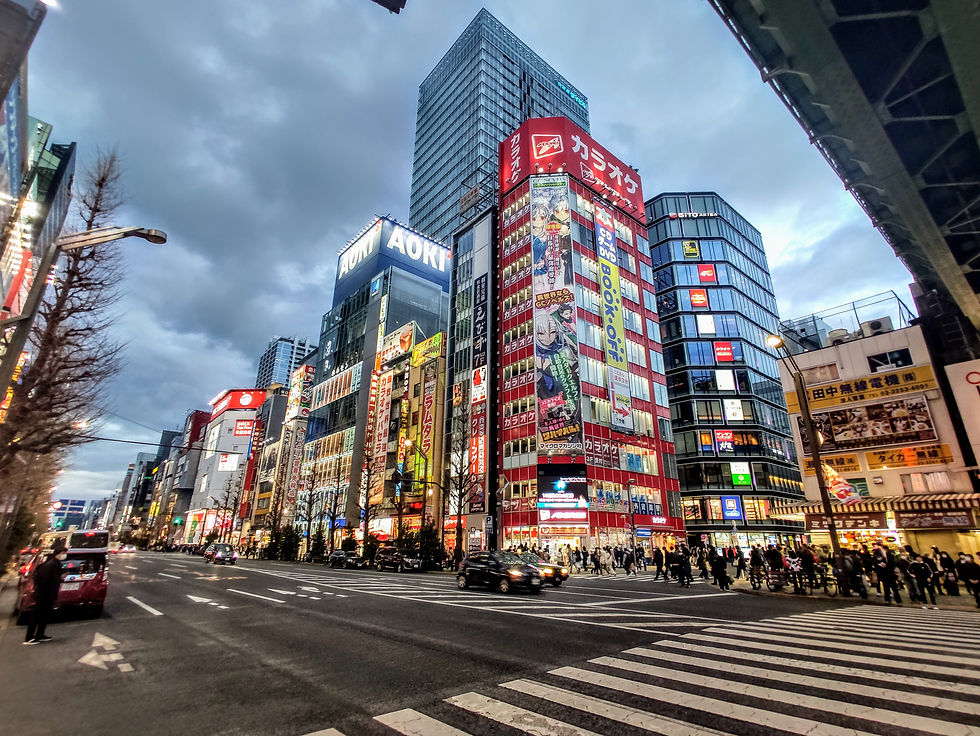
Going out in Tokyo was going to be expensive, so we made a quick trip back to the hostel for some drinks before taking the second to last train of the night to Shibuya. We felt like teenagers, but the cover charge at the club was ¥3,500 ($31, or more than I spent on an average day in Vietnam), so we felt it was justified.
The party was one of the craziest I've ever been to, with only Berlin putting up a serious fight. The club itself was sleek, futuristic, and fabulously clean, with huge LCD screens to match the techno music which was distinctly different from the European stuff. Some of the tracks were at a frenzied 180 BPM, which when played on a club sound system feels like taking a shot of adrenaline and living life at 1.5 times normal speed. The vast majority of the partiers were Tokyoites, ordinarily so reserved but completely transformed once they walked into the party. We danced with multiple Japanese groups, which invariably involved lots of hugs and high-fives, seemingly as much an experience for them as it was for us.
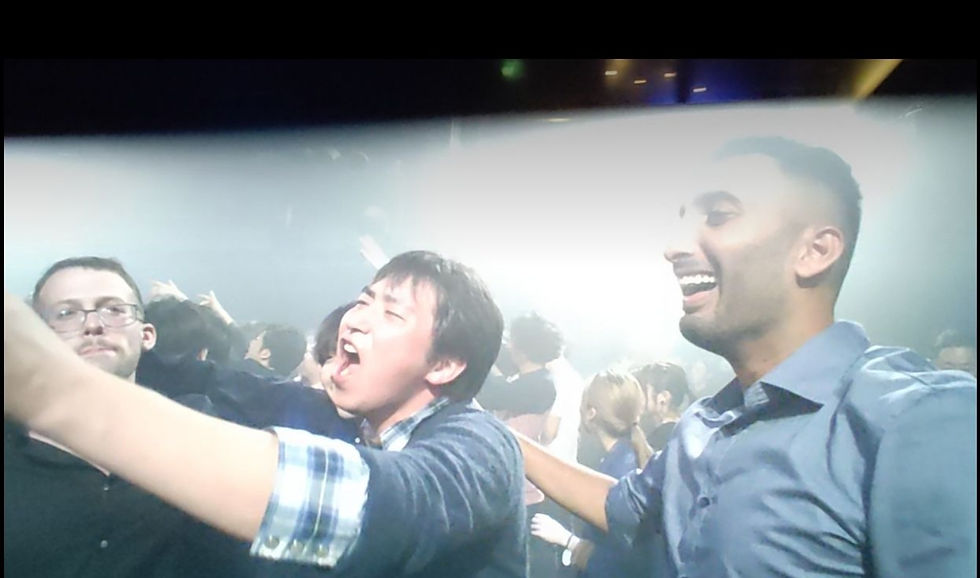
Japanese club fashion was unique, too. The men were mostly either in the very dark casual attire typical of the techno scene everywhere or proper suits, while many of the women looked like they had come from church, wearing thick sweaters, knee-length skirts, and stockings. I spent a while dancing with a girl named Naho, who was unironically anime-character-shy and stuck her glass of ice water in my shirt when I said I was hot, giggling like a 5-year-old when I recoiled. My friends were watching nearby and almost suffocated laughing.
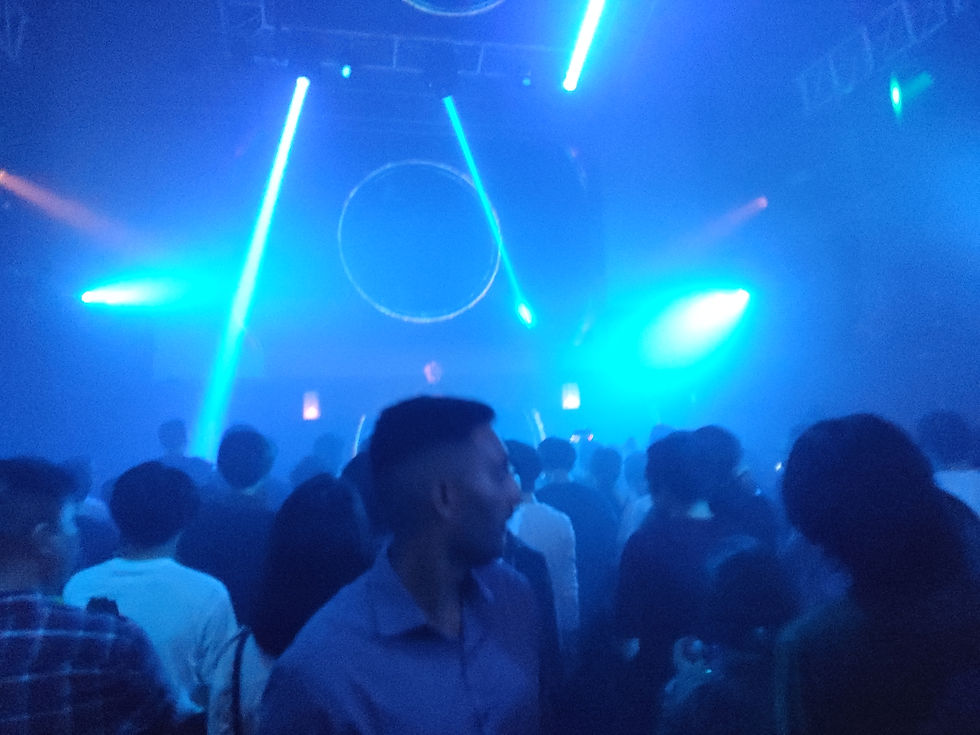
The party only really started winding down around 3:45 when people started drifting towards the back of the club, where they found a seat and fell asleep until leaving for the subway. The street was silent with absolutely no noise escaping from the club and we spent the remaining time before our train hiding from the rain that had started and eating ice cream at a convenience store and reflecting on what a wild night it had been. The streets surrounding the station had the only litter I've seen in Japan as of yet, another sign of the transformation the locals undergo after hours. Our hostel served breakfast starting at 4:30 am, perfect for club-goers returning at 5:45. I went to bed with the sunrise for the first time in years without a shred of regret; it had been one of the best nights in memory.
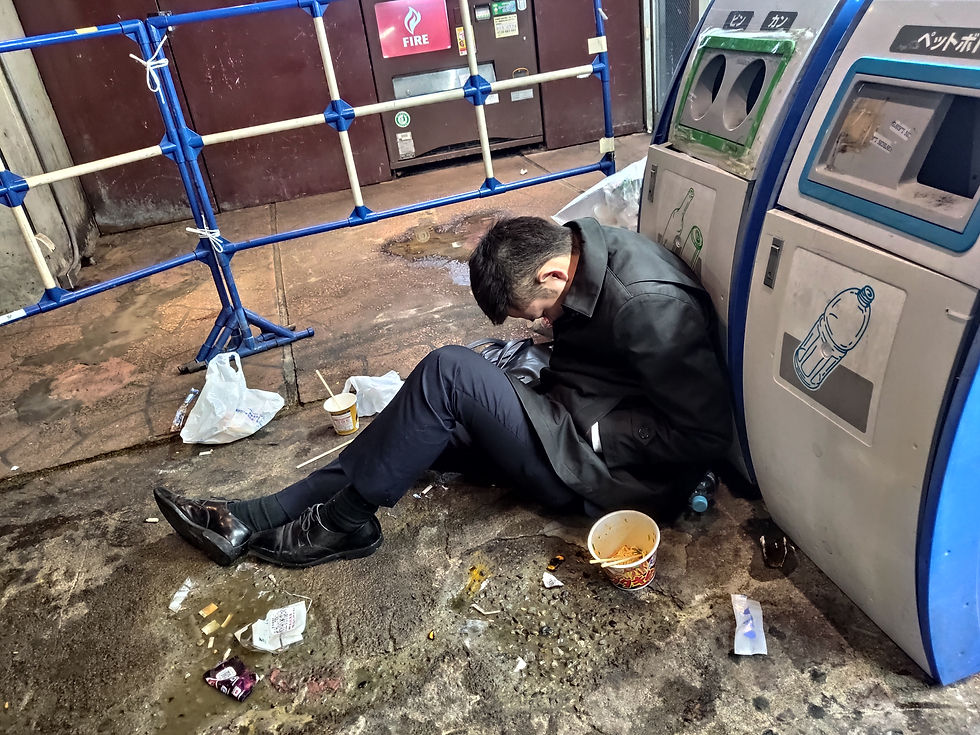
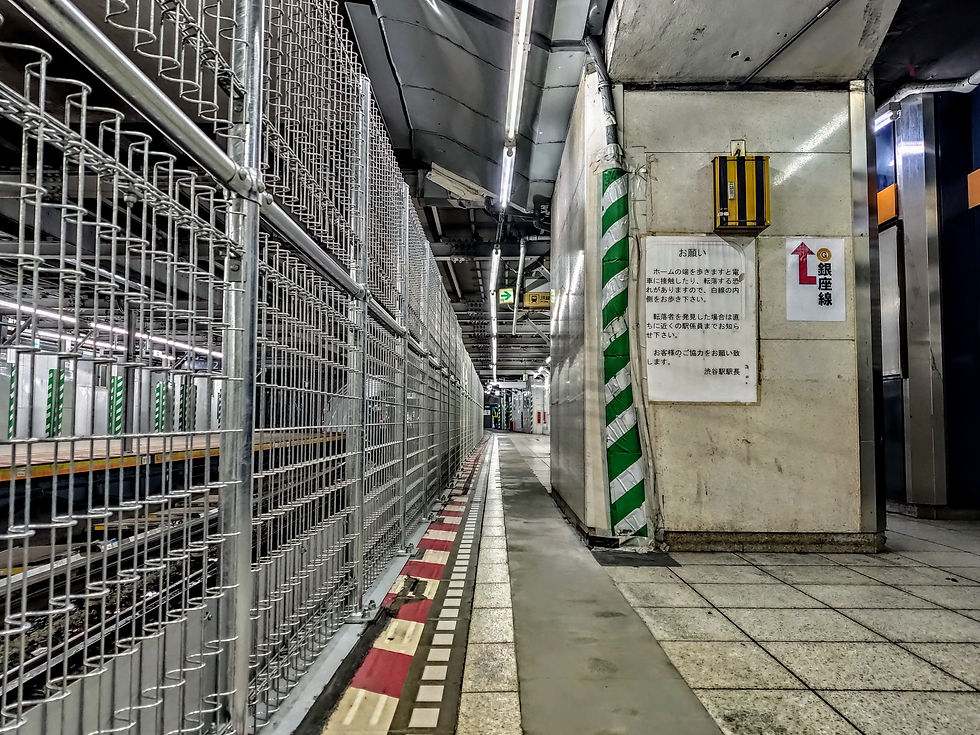
The next day was our last in Tokyo, starting off with a rude awakening by the cleaning lady who decided to vacuum in our room at 10:30 am despite seeing that we were all sleeping. Being in different states of exhaustion, we split up, Yotam and I heading to the Tsukiji fish market in Chūō. Tsukiji used to hold massive tuna auctions in the early morning which were apparently a sight to behold, but the government shut down that part of the market and moved it to a more modern facility further south, leaving behind a ring of sushi restaurants, fish vendors, and touristy knife shops. We had a tasting menu of 11 different kinds of sushi at one of the restaurants, with some of the freshest fish I've tasted in my life.
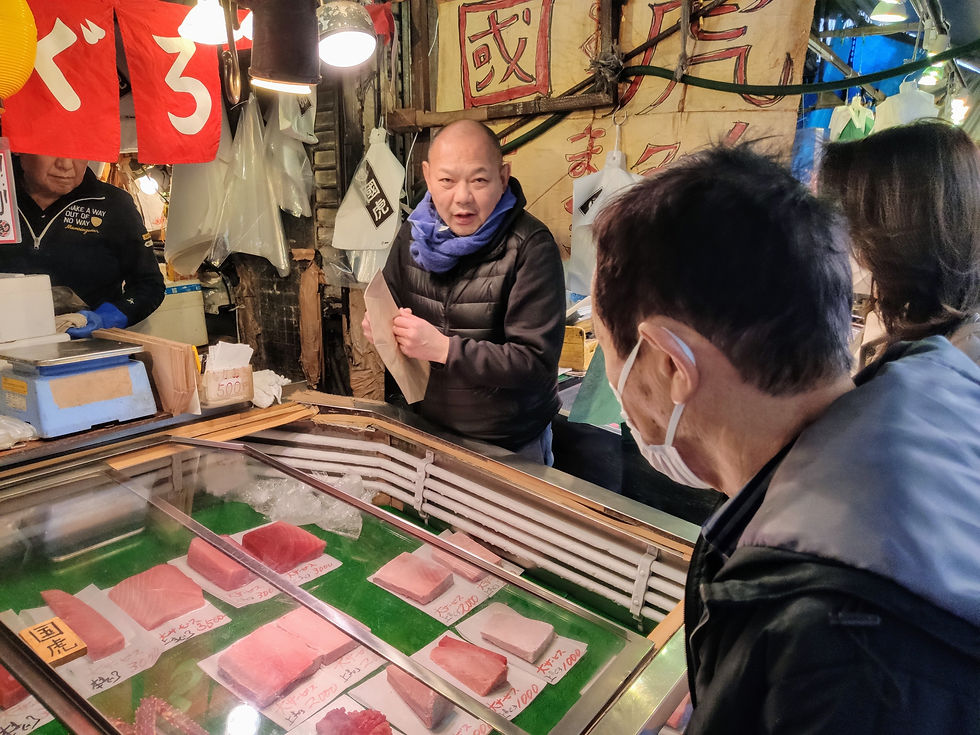
After some research into photo spots, we went to the Tokyu Plaza in Ginza and took the elevator up to the rooftop. There was a spectacular view of one of the busiest and most photogenic intersections in Tokyo, with shinkansen trains speeding past Yūrakuchō Station in the background. I was in my element and seriously regretted not having a proper camera with me to make the most of the spot, since my phone's camera was too automatic to take long exposure shots in daylight.
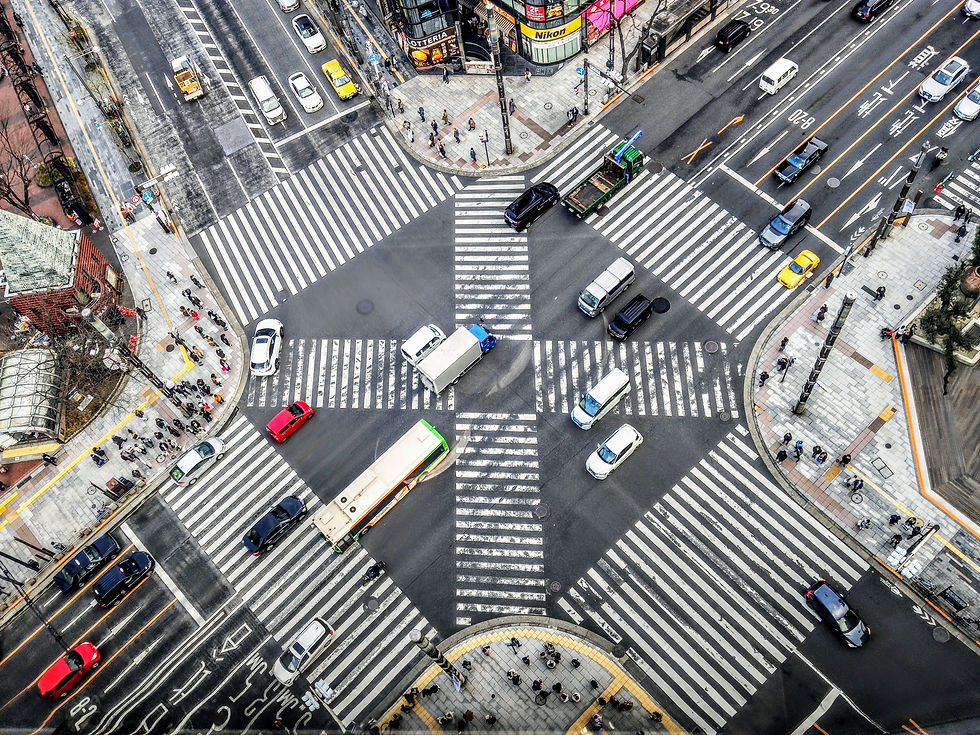
Next up was Harajuku, a bustling neighborhood in Shibuya I hadn't had the time to visit when staying in the area. This was Japanese counter-culture territory, the pedestrian-only streets full of young and hip locals and lined with the shops where they seemed to buy their clothes, stocking short anime-style dresses and shoes that looked like they were designed by aliens. Harajuku is also home to Tokyo's famous pet cafés, the main road containing a dog café, a pig café, and even an owl café, where you can have a snack surrounded by the animals.
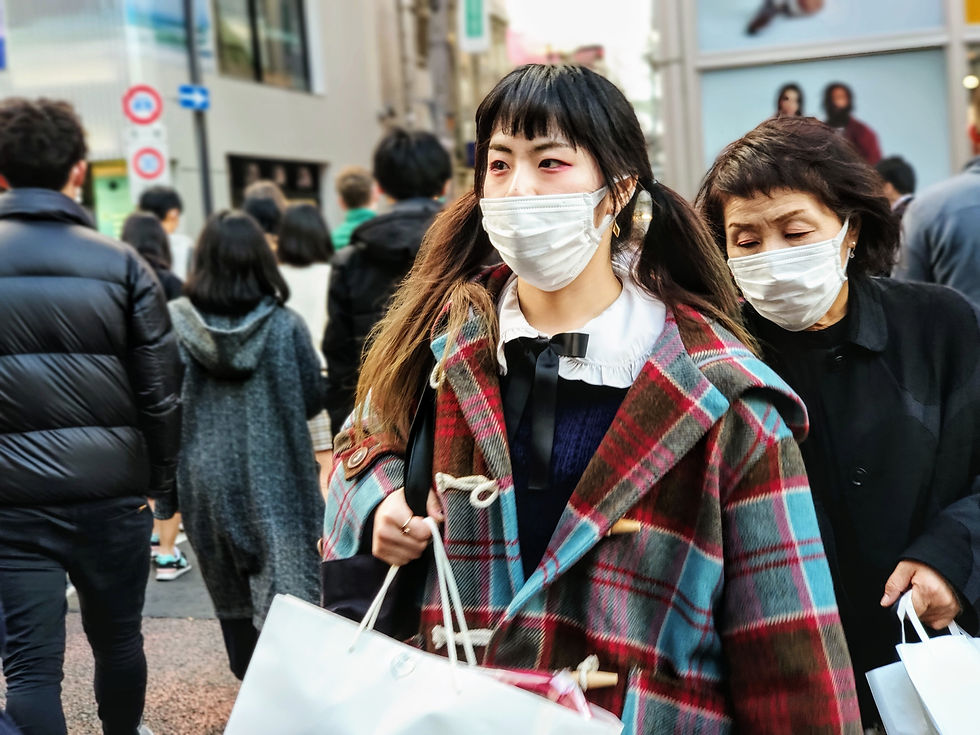
We rendezvoused with Peleg and Roy in a maid café in Akihabara, where the menu included a free "birthday experience" if your birthday was within a week. I wrote down my name for them, and they made me a little cake with a birthday wish (in English!) written in berry syrup on the plate. All the maids stood around me in a semicircle, clapping and singing "happy birthday dear Aaron-sama" (apparently a title of respect roughly translating to "master") in full moe mode, with most of the exclusively male customers in the café singing along. People singing happy birthday to me is usually enough to overwhelm me entirely; this was a new and unprecedented level of discomfort. In all the excitement I forgot to take a picture; the one below is from when I remembered.
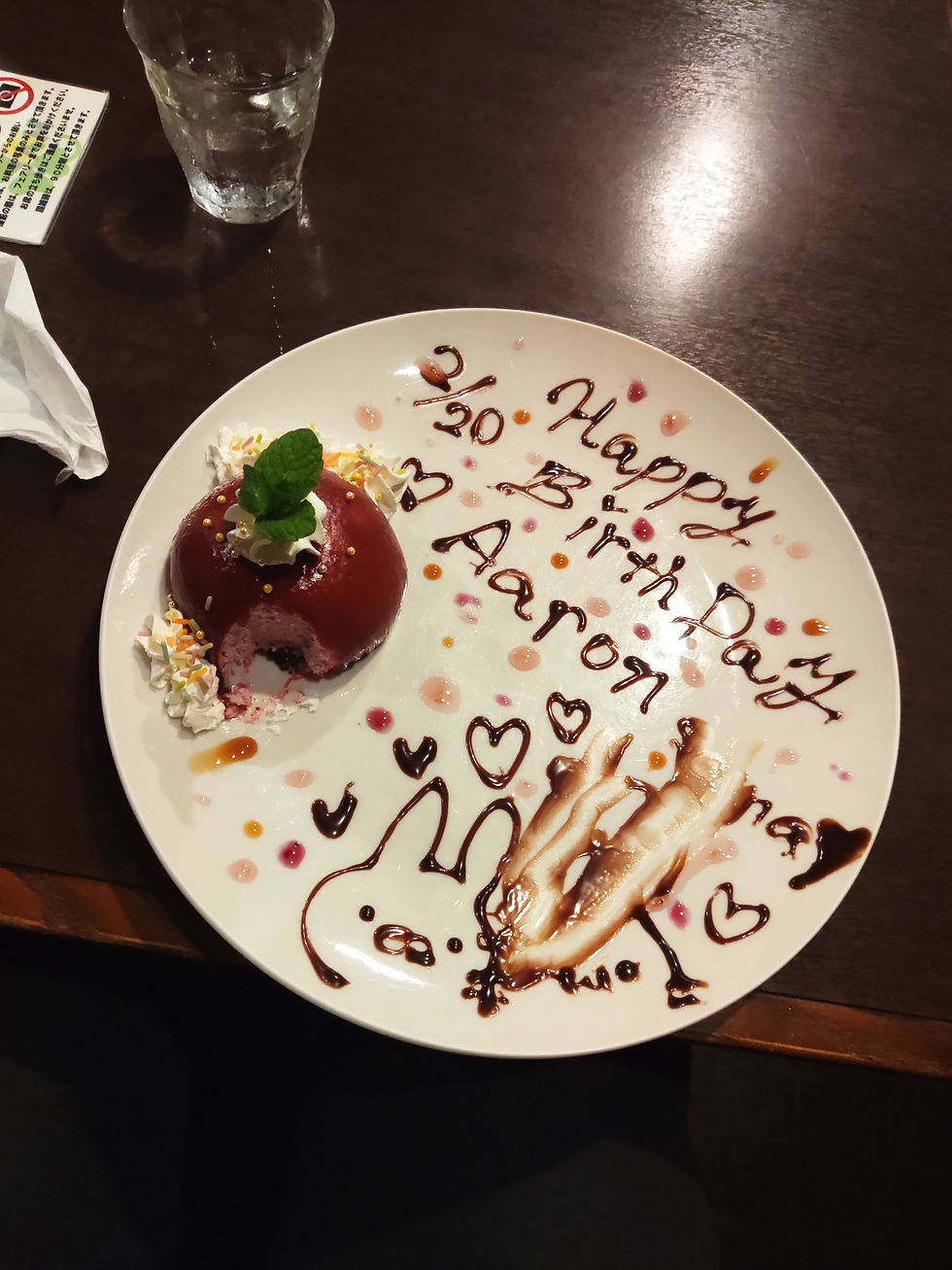
We were leaving Tokyo early the next morning and it had started to rain, so after visiting some more arcades we were back in Akasuka and going to sleep. Tokyo had been incredible, electric, and unexpected, rightfully earning a place of honor in my short list of favorite places. I'll definitely be back.
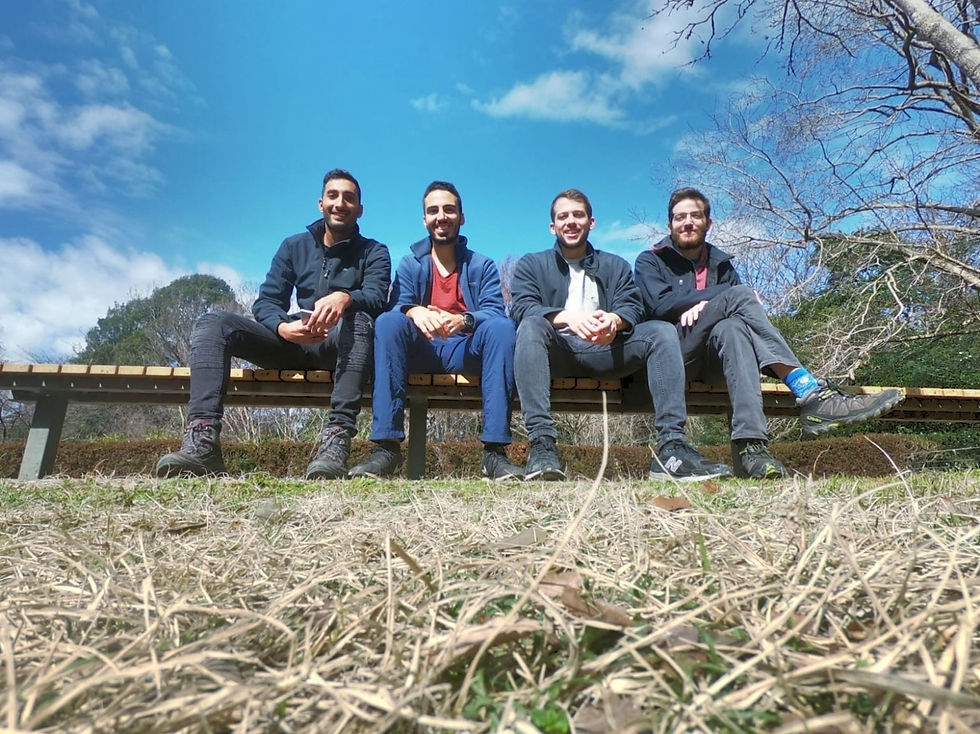





Comments